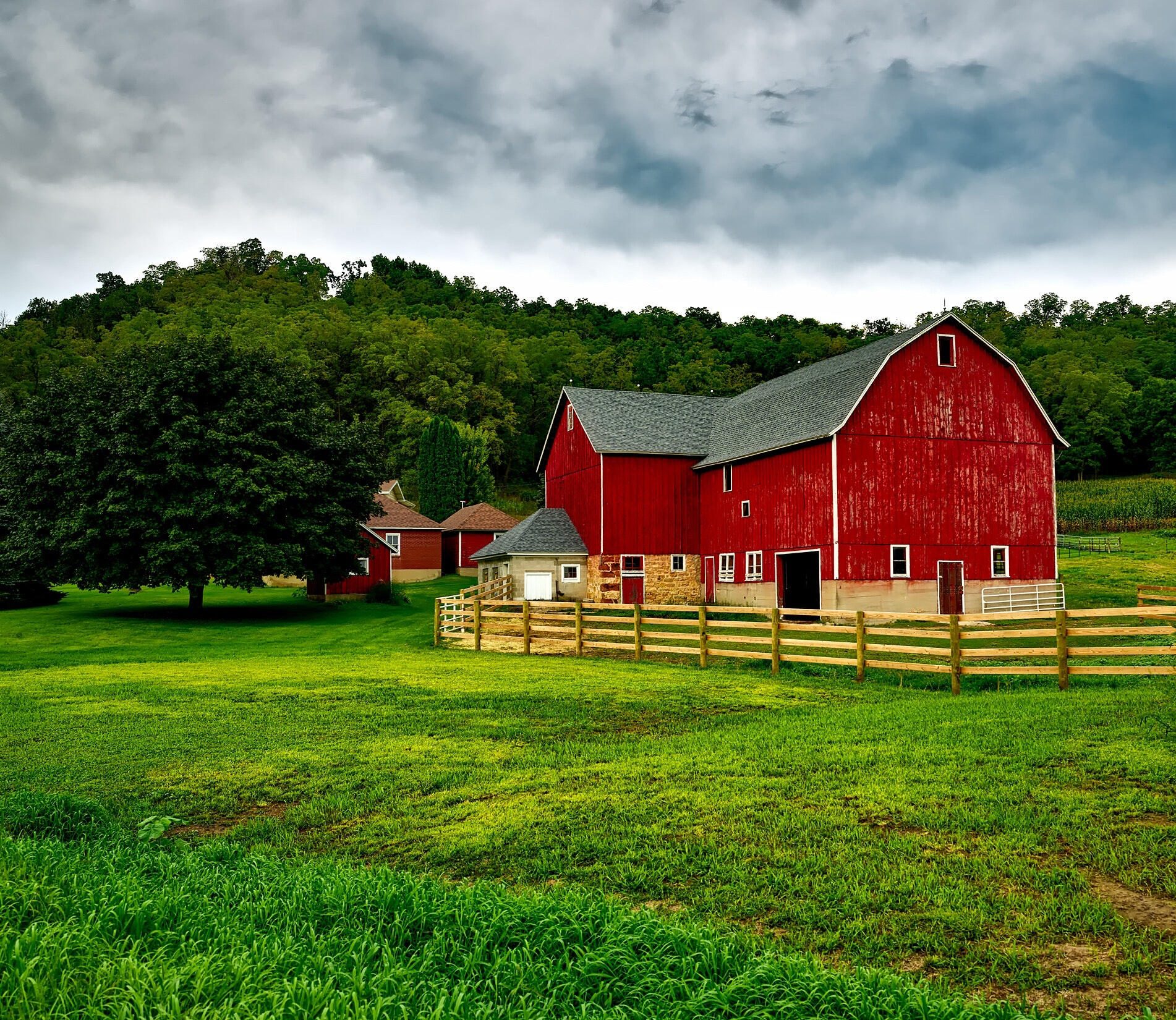
How can we live together on a changing planet?
Heartland's Future
Mobile Exhibit Tour across the Midwest in Spring/Summer 2023
Our Project
What we do
From April to July 2023, some two dozen European students will crisscross the Midwest in a retrofitted school bus featuring two mobile exhibits. Our non-profit, educational “BUS-eum” will bring regional history alive and engage the public in discussions, with related films, presentations and publications. This year, an all-new exhibit focuses on environmental shifts and extremes facing all of us today: How will we deal with a changing climate, while addressing such challenges locally?
Bus-eum
The exhibit
Our main exhibit is inside a retrofitted school bus turned into a museum, which has toured the Midwest since 2003 with relevant but often overlooked aspects of history and culture. This mobile format has made topics accessible to audiences in a variety of settings and hundreds of communities across the region.Our new project focuses on the environmental and societal challenges of climate change, under the title “Heartland’s Future: How Might We Live Together on a Changing Planet?” It aims to expand popular awareness about possible responses to climate change by focusing on communal discourse and less on passive education.Students from the University of Erfurt, Thuringia as well as American students and other volunteers will accompany the BUS-eum, tasked to broaden curbside discussions and offer different perspectives on known and lesser known subjects. In this way, we hope to find common ground on this often-times divisive subject by providing new insights and interactive presentations about possible, simple and cost-effective solutions.
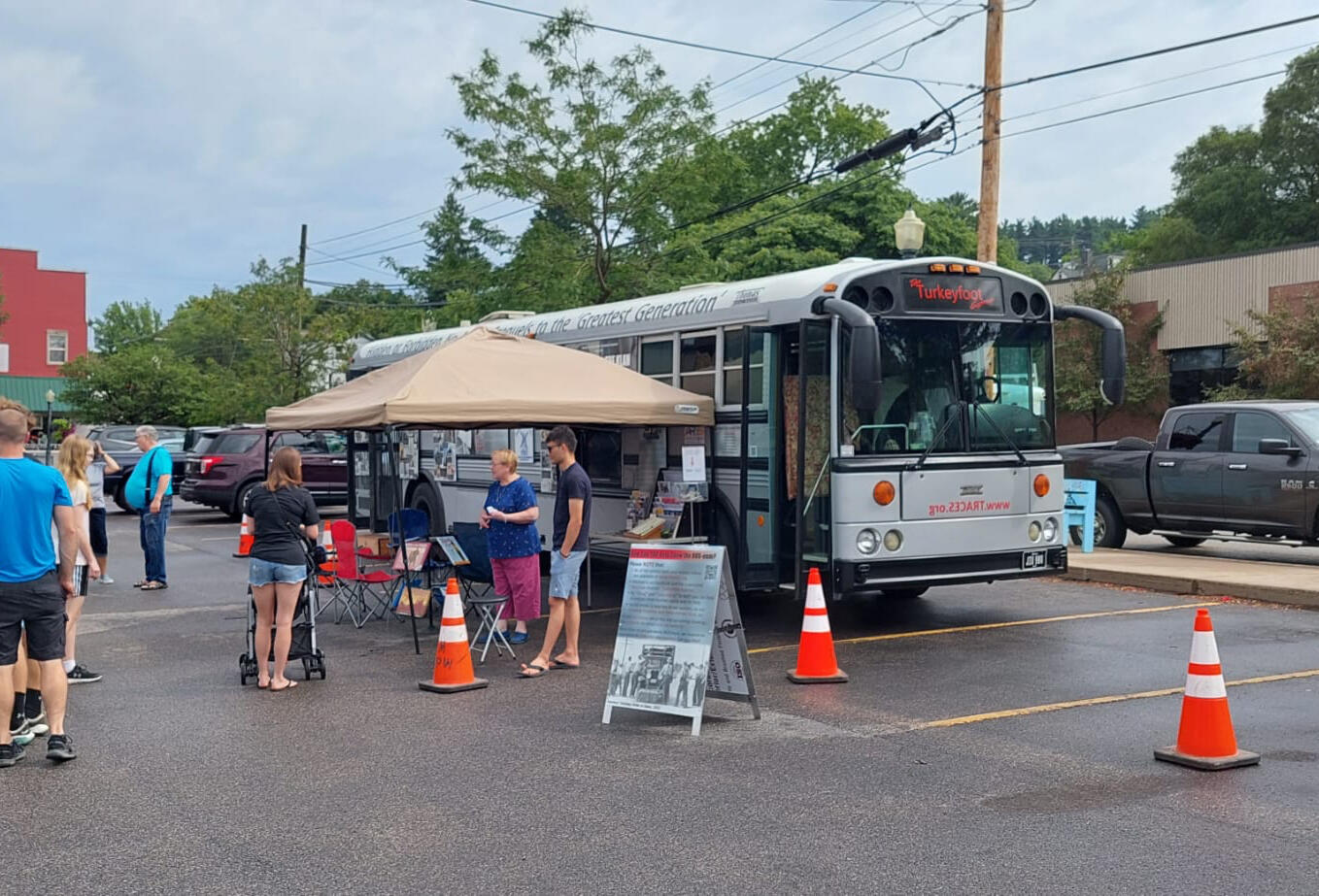
What you need to know about climate change
When it comes to the pressing issue of Climate Change, our attention shouldn't be solely fixated on economics. As a society, we hold incredible potential to contribute to the solution. Beyond addressing infrastructural challenges associated with transportation and resource distribution, we have the power to make a significant impact from an individual standpoint. In fact, there are visionary individuals already spearheading transformative changes within various industries. Brace yourselves as we embark on an enlightening journey, exploring twelve diverse aspects of our everyday lives and their profound connection to the fight against climate change. Get ready to witness the inspiring stories that illustrate how we can all be agents of positive change in this crucial battle.
What People Get Wrong About Climate Change
Nature Is Speaking
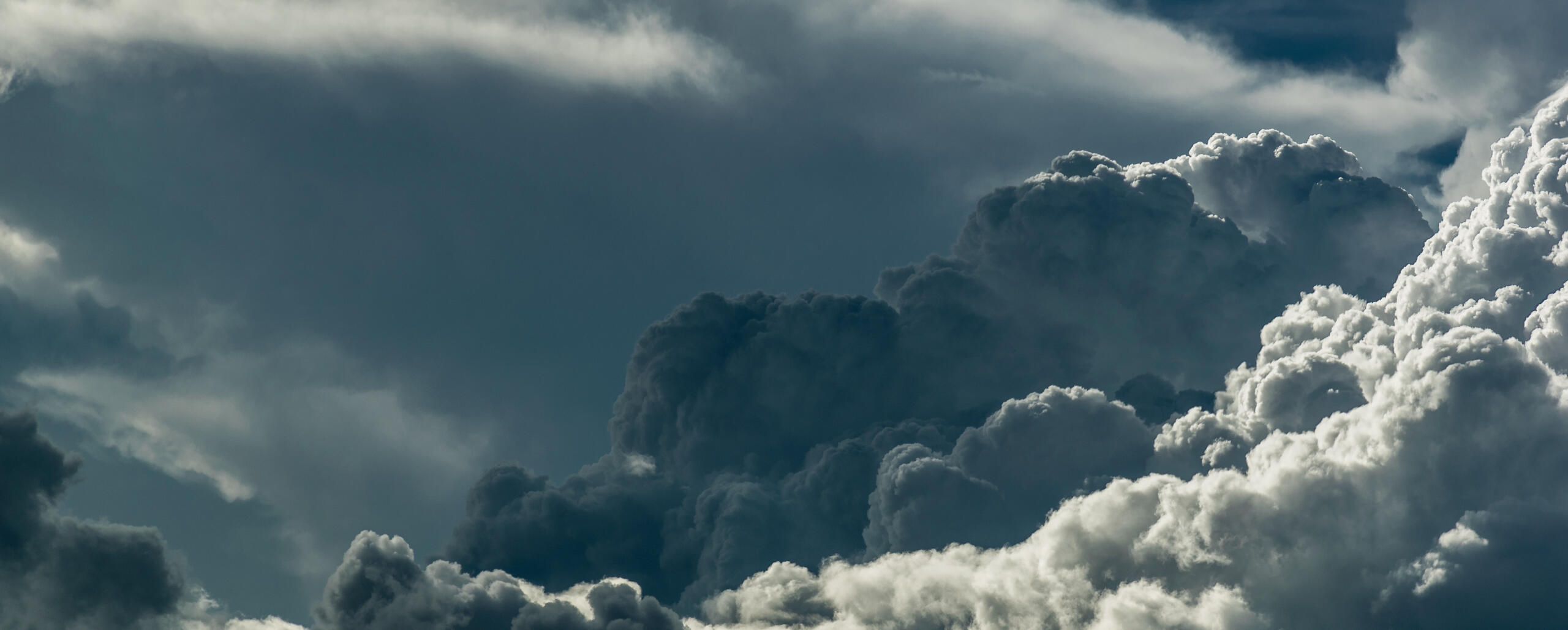
What happened so far?
Causes And Effects Of Climate Change
We WILL Fix Climate Change!
Impacts, Adaptation & Vulnerability
How Young Climate Crisis
Activists Changed The World
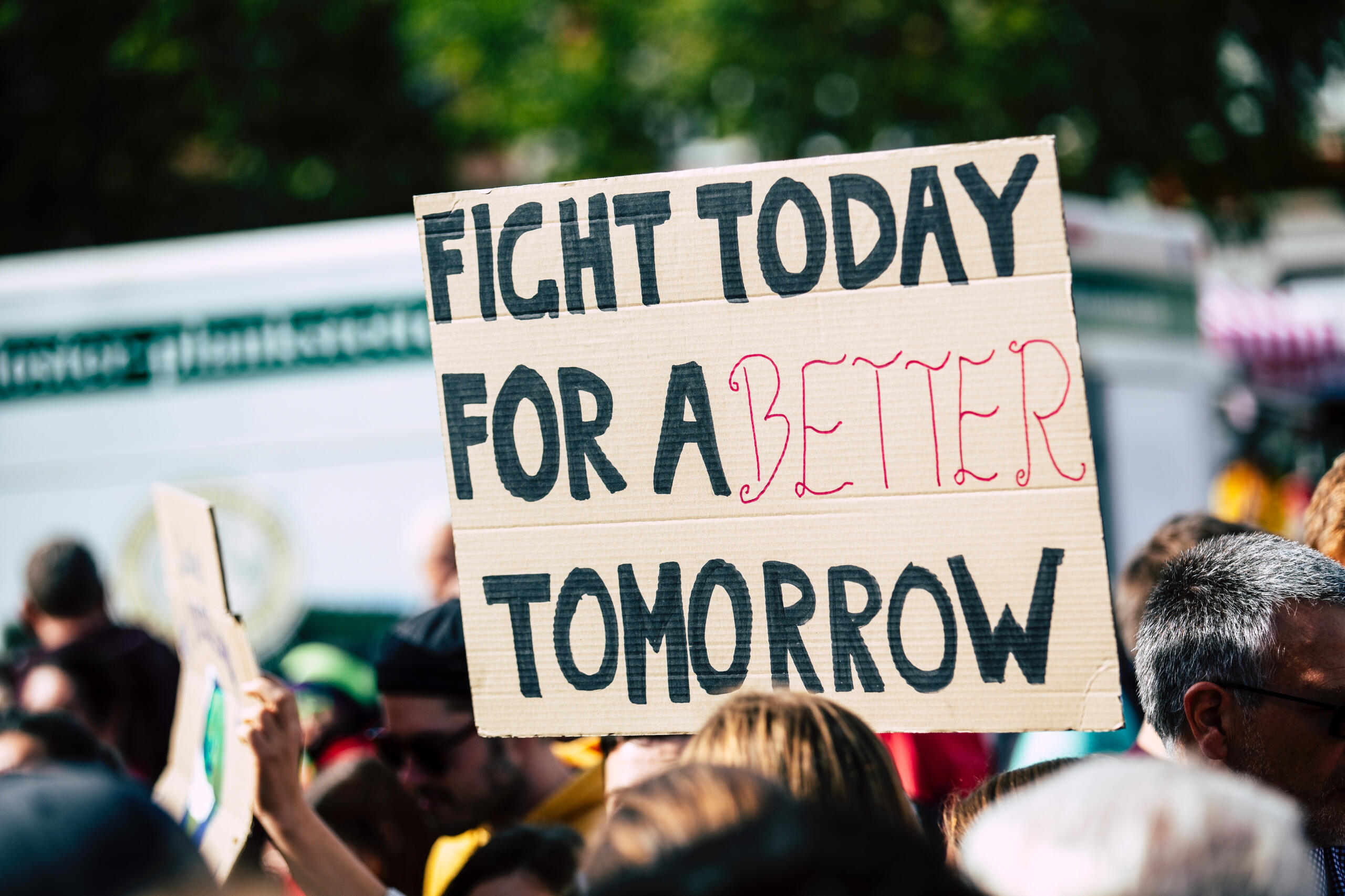
The Mobile Exhibit
Twelve Climate Change Frontiers
Panels
Reimagining Agriculture
Welcome to our agriculture subpage dedicated to finding sustainable solutions for the future, where we delve into innovative techniques and technologies to grow crops and raise livestock that prioritize the health of our planet and its inhabitants.
Panels
Reimagining
transportation
Welcome to our subpage on reimagining transportation for a greener future, where we explore innovative and sustainable solutions to the challenges of climate change.
Panels
Reimagining Food
Welcome to our food subpage focused on promoting sustainable and ethical practices in the food industry, where we explore ways to reduce food waste, support local agriculture, and ensure equitable access to nutritious food for all.
Panels
Reimagining
Neighborhoods
Welcome to our neighborhood subpage dedicated to creating vibrant and sustainable communities, where we examine how urban planning, architecture, and community engagement can contribute to a more livable and environmentally conscious built environment.
Panels
Reimagining Housing
Welcome to our housing subpage dedicated to promoting sustainable and affordable housing solutions, where we explore how innovative design, construction, and policy can help create homes that are not only energy-efficient and eco-friendly, but also accessible and equitable for all.
Panels
Reimagining
Work
Welcome to our work subpage dedicated to exploring how we can transform the way we approach work in the face of climate change and environmental challenges, where we examine new models of sustainable work that prioritize flexible work arrangements, community building, and innovation, all while fostering a deeper connection to the natural world.
Panels
Reimagining Fashion
Welcome to our fashion subpage, dedicated to exploring how we can create a more sustainable and ethical fashion industry, where we examine new models of production, design, and consumption that prioritize the well-being of people and the planet.
Panels
Reimagining
Energy
Discover how the energy sector is transforming to mitigate the impact of climate change.
Panels
Reimagining Nature
Explore how preserving and restoring nature is crucial for combating climate change on our nature subpage.
Panels
Reimagining
Physical Health
Learn how climate change affects physical health and how we can adapt to mitigate its impact on our physical health subpage.
Panels
Reimagining Mental Health
Explore the connection between climate change and mental health, and discover ways to take care of your mental health in the face of climate change on our mental health subpage.
Panels
Reimagining
Social Justice
The social justice subpage explores the intersection of climate change and inequality, and proposes strategies to address environmental racism and other systemic issues.
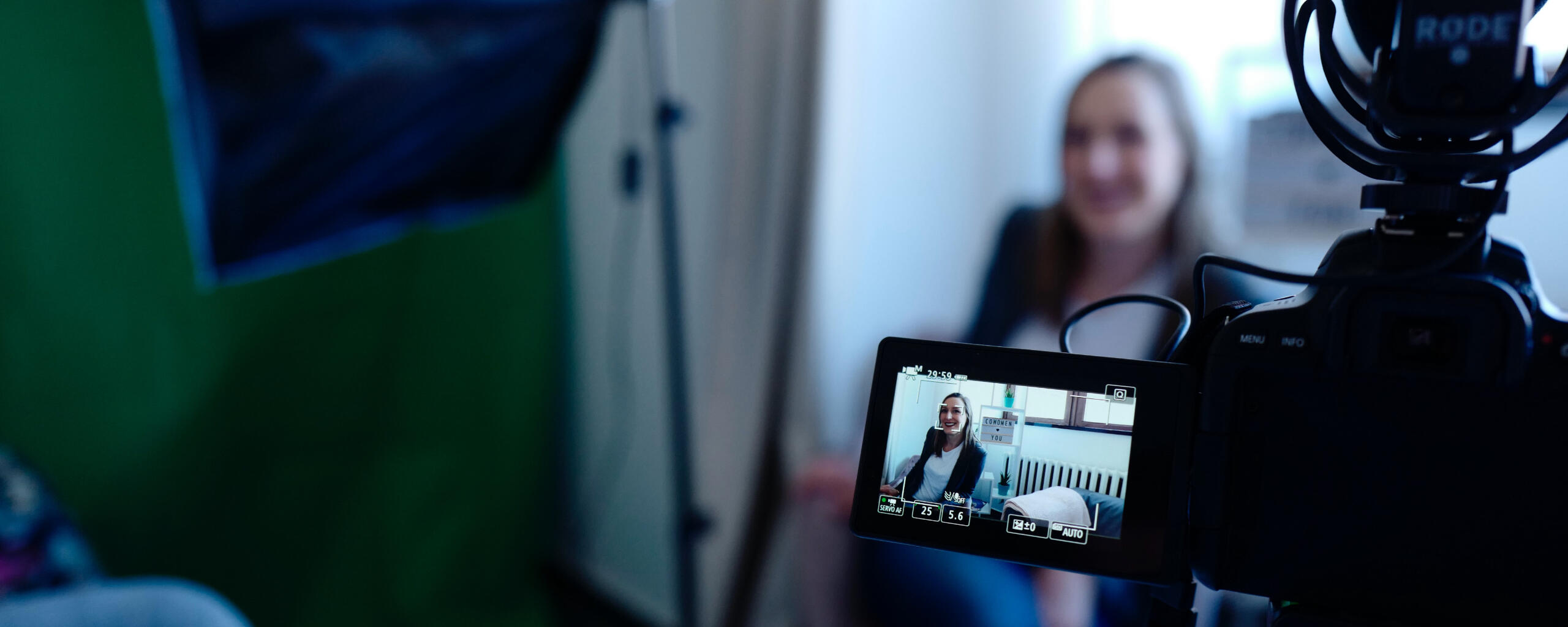
Find documentaries here
Our Planets Future: Combating Climate Change
Wind And Climate Change
Climate Change: Living On The Water
An Inconvenient Sequel: Truth To Power
Fleeing Climate Change
Our Planet: Our Business
Did we miss something? Share your ideas or tips with us!
Our team is committed to presenting a diverse array of perspectives and information for your benefit. However, given the rapid pace of developments, it's not always possible to update everything simultaneously. If you have any suggestions or resources you'd like to share, please complete the form below with your panel topic and tips (including links) or contact us directly at heartlandsfuture@gmail.com. We'll take it from there!

Our Team at work

-

-

-

Schedule
Locations
With stops in rural and urban communities in Iowa, Missouri, Illinois, Wisconsin, Kansas, Nebraska, North and South Dakota and Minnesota we want to talk with locals and invite visitors to engage with new perspectives about how we all might live in an altered climate.
Dates and times, see calendar below. More to be published soon
(New locations added weekly)
Iowa
Coming to:
Spencer
Emmetsburg
Hampton
Iowa Falls
Mason City
Ames
Indianola
Coon Rapids
Des Moines
Cedar Rapids
Davenport
Iowa City
West Branch
Nebraska
Coming to:
Columbus
Central City
Lincoln
Omaha
Missouri
Coming to:
Kansas City (Earth Festival & others)
Warrenburg
Witchita
Warrenburg
Parkville / Kirksville
Cottleville
Springfield
Richland
Saint Louis
Illinois
Coming to:
Chicago
Springfield
Jacksonville
Bloomington
Peoria
Wheaton
Macomb
Eureka
Wisconsin
Coming to:
Viroqua
Gays Mills
Davenport
Stevens Point
Eau Claire
Minnesota
Coming to:
Saint Paul
Minneapolis
Press and Publicity
Under the following link you can download high-resolution images, press releases, and other resources that will help you promote our Bus Tour and share our message with your audience.
Listen to our recent Radio Interviews:
Also featured live on:
about us
University of Erfurt & Traces
We are a group of students from the University of Erfurt who are passionate about climate change and global environmental issues. Our team is comprised of economics, law and international relations students, all of whom are dedicated to making a difference and sharing our knowledge with others.In collaboration with the TRACES Center for History and Culture, we have come together to create a space where people can come to learn, discuss, and engage with us about the importance of climate change and our shared responsibility, as well as insights into how history has influenced our understanding of it today.
history
Historical exhibit inside
Step inside our bus and discover a story of the past and how it connects to our efforts in the present. Our historical exhibit showcases the bravery, perseverance, and determination of past generations and how their sacrifices paved the way for the future. With artifacts, photographs, and first-hand accounts, this exhibit provides a glimpse into a crucial period in history and honors the individuals who shaped our world.
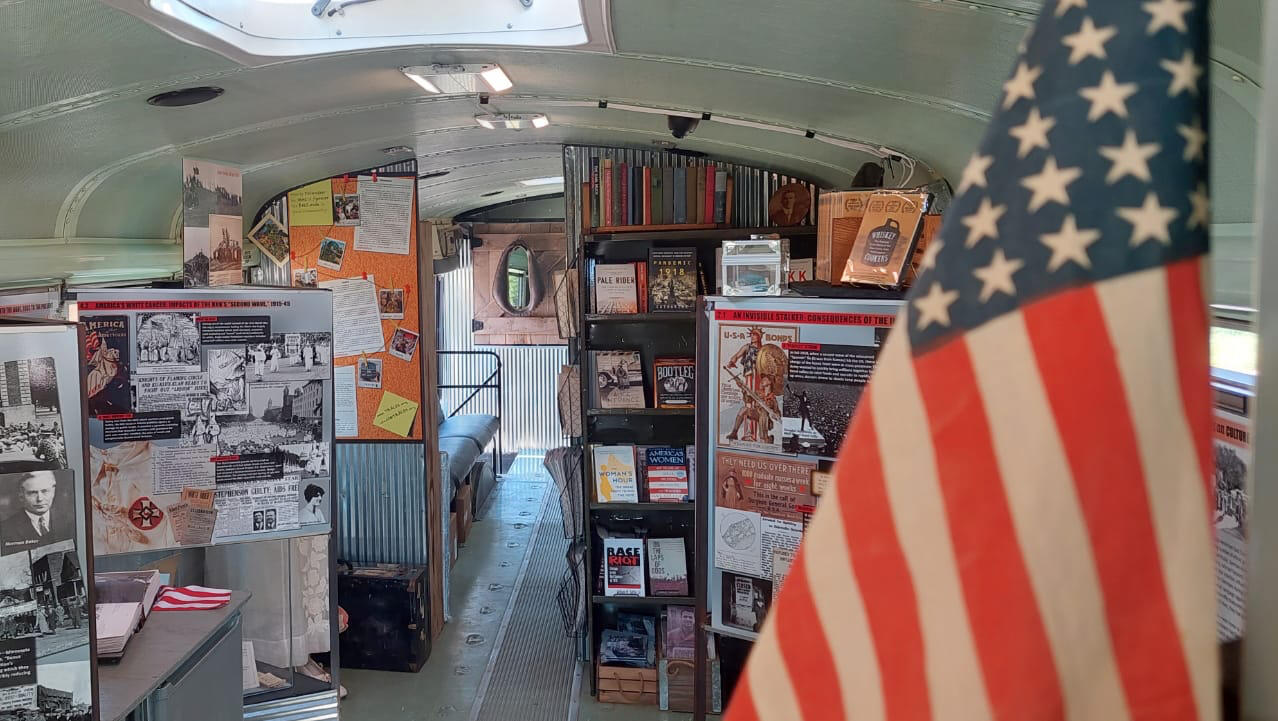
support us
Become a host, sponsor or donor
Join the fight against climate change by donating or hosting a stop on our Climate Bus Tour! Your support will help us continue our mission to raise awareness about the impacts of the climate crisis and inspire people to take action. By donating, you'll be investing in a movement that is making a difference. And by hosting a stop, you'll have the opportunity to bring the tour directly to your community and engage with people about this important issue. Don't wait, make a difference today by donating or becoming a host!
Sponsorship
Are you looking for a way to make a meaningful impact on the environment and inspire change in your community? Consider becoming a sponsor of our Climate Bus Tour! Your support will help us spread awareness and engage with people across the country about the urgent need for climate action. As a sponsor, you'll have the opportunity to align your brand with a cause that is making a difference and demonstrate your commitment to sustainability. Join us on this journey, work with us directly, have your name/brand displayed on our bus and make a lasting impact - become a sponsor today!
Donation
Join us in our mission to raise awareness about the urgent need for climate action! By donating to our Climate Bus Tour, you'll be supporting a movement that is spreading the message of hope and change to communities across the country. Your contribution will help us with logistical costs, educating people about the impacts of the climate crisis and inspiring them to take action. With your support, we can build a better future for generations to come.
collaborators
Partners and Organsations
We believe that by working together, we can achieve greater impact in raising awareness and inspiring action on climate change. We are proud to partner with organizations and individuals who share our passion for the environment and are committed to creating a sustainable future. In this section, you'll find a list of the amazing individuals and organizations that have joined us on this journey and made a lasting impact. Let's work together to build a better future!
Midwest Quaker Meetings

Heritage Centers & Museums
Sponsors and Funding by
The Guyader Family

J. Brock Wommack

more information
FAQs
collaborate
Contact us
We'd love to hear from you. Whether you're curious about our tour, want to become a host, collaborator or get involved yourself. Use the forum below, send us a email or give us a call @(641) 420-7768 and we'll get back to you asap.
Email: heartlandsfuture@gmail.com / Phone: (641) 420-7768
more info
FAQ's
** Is there a entry fee for the general public ?**
No, it's absolutely free. Anyone is welcome to view the exhibit and engage in discussion with us.Why choose the midwest for our tour?
The Midwest is a key area in the fight against climate change due to its significant contributions to agriculture, energy production, transportation, and water resources. The Midwest's agricultural sector is a major contributor to greenhouse gas emissions, and the region's energy production, transportation hubs, and water resources also play a crucial role. Additionally, the Midwest's political importance as a swing region in national elections means that addressing climate change in the region will require political will and support.How big is the Bus and what are its dimensions?
The BUS-eum itself is about 40 feet long and 8 feet wide. Parking in a parking lot is optimal, rather than a sidewalk spot to ensure the safety of our visitors. There should still be enough space for visitors to safely walk around it. Additionally, we would need an electrical outlet and, if possible, extension cords since there are several electronic exhibits in the bus; it runs on normal voltage, so a regular outlet would suffice.What happens during a showing?
We usually start with a general presentation (either inside the Bus itself, outside of it or in a meeting room with technical equipment like a projector or tv). We then invite people to view our exhibit and enter the Bus from the front and exit it through the back door. External panels are shown on the outside and one can walk around it to engage with us. Our aim is to spur questions and discussion with visitors and start a discourse on the topics presented.Are there presentations and how long do they last?
The environmental presentation and historical social justice presentation each last approximately 30-45 mins.I am interested in Hosting: Are there any costs?
We appreciate any kind of support or donations. While we are a non-profit organization, we do require some investment to cover our costs. The BUS-eum costs about $75-100/hr to keep on the road, but there are also other ways to fund our project: casual or crowd-funded donations, grants, or other financial support; a place to stay or a cooked meal are always very welcome. Any checks should be made out to TRACES Center for History and Culture; as all monetary donations to us are tax-deductible, our EIN # = 31-1815314.** How much advertising do we look for?**
We can provide you with a press release and marketing material and would appreciate all outreach to local media and your community.** How long do you typically expect the bus to be parked somewhere?**
The BUS-eum can be shown for a couple of hours, half or the entire day, as well as for multiple days.More questions and answers coming soon
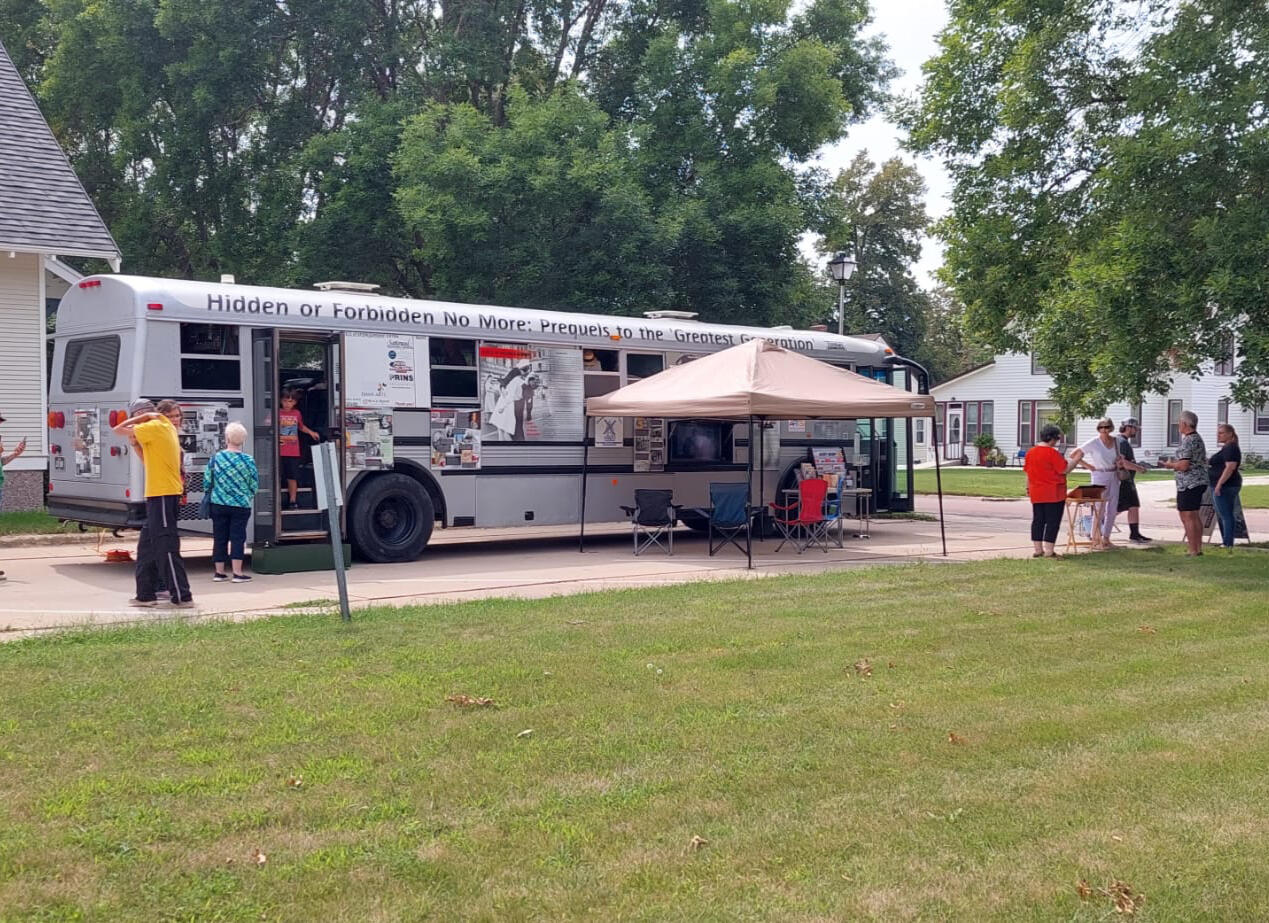
Press and Publicity
Download high-resolution images, press releases, and other resources that will help you promote our Bus Tour and share our message with your audience.Simply click on the links provided and you'll be directed to our DROPBOX FOLDER where you can DOWNLOAD the files you need.This section is regularly updated, so make sure to check back for the latest news and resources. We're excited to work with you and appreciate your interest in our tour. Thank you for visiting our website and taking the time to promote our tour.(Alternatively you can copy paste the raw text below these links)
E-Flyer (coming soon)
Copy & paste the text below for more customizable use
PRESS RELEASE OPTION #1**BUS-eum 2023 Tour; 2 Exhibits: Heartland's Future, and Hidden & Forbidden No More, 1914-1939 **FOR IMMEDIATE RELEASE
From the University of Erfurt, Germany, students are bringing their innovative mobile exhibit about climate change to the Midwest as part of their efforts to raise awareness and spark meaningful discourse on this pressing issue.HEARTLAND'S FUTURE: How Can We Live Together on a Changing Planet? exhibit, features a series of engaging presentations and panel discussions, exploring the latest research, innovative solutions, and practical actions that can help us mitigate and adapt to the effects of climate change.They're thrilled to bring this mobile exhibit to your area, and hope to inspire and engage local citizens, professionals, and students to take action on climate change."We believe that by fostering open and honest discussions about the challenges we face, we can work together towards a sustainable future." -David Bernhardt, student project organizer.The exhibit will be hosted at Clay County Heritage Center, on Friday, March 31st, from 11am-5pm, and will be open to the public, free of charge.Visitors will have the opportunity to interact with the exhibits, participate in panel discussions, and learn more about the impacts of climate change on their community and the world at large.*This exhibit is traveling on the BUS-eum with TRACES: Center for History and Culture's mobile exhibit HIDDEN AND FORBIDDEN NO MORE: Prequels to the Greatest Generation, 1914-1939; highlighting five social history topics, The Kaiser (German immigrant hysteria), The Klan (America's white cancer), The Killer (1918-1919 influenza pandemic), The Cow War, and The Whiskey Cookers (Prohibition era bootlegging).www.heartlandsfuture.com
www.traces.org
Follow the tour on Facebook: TRACESpuren
Instagram: @heartlandsfuture
PRESS RELEASE OPTION #2[Letterhead of the organization hosting the exhibit]Dear [Name here],FOR IMMEDIATE RELEASE [City, State] - A group of German students are bringing their innovative mobile exhibit about climate change to [City], as part of their efforts to raise awareness and spark meaningful discourse on this pressing issue. The exhibit, titled Heartland’s Future: How can we live together on a changing planet?, features a series of engaging presentations and panel discussions, exploring the latest research, innovative solutions, and practical actions that can help us mitigate and adapt to the effects of climate change. We're thrilled to bring this mobile exhibit to [City], and we hope to inspire and engage local citizens and students to take action on climate change’. said David Bernhardt, one of the organizers of the exhibit. We believe that by fostering open and honest discussions about the challenges we face, we can work together towards a sustainable future.’ The exhibit will be hosted at [Location] on [Date], and will be open to the public, free of charge. Visitors will have the opportunity to interact with the exhibits, participate in panel discussions, and learn more about the impacts of climate change on their community and the world at large. [possible quotes by host:] We're excited to welcome the BUS Team and their mobile exhibit to our community, `Climate change is a critical issue that affects us all, and we believe that this exhibit will help us engage in meaningful conversations and inspire us to take action.’ The mobile exhibit is part of a larger initiative to raise awareness and promote action on climate change. The students have already engaged with others in Germany, and plan to continue their tour in the upcoming years.For more information on the exhibit and its schedule, please visit
www.heartlandsfuture.com
www.traces.org
Follow the tour on Facebook: TRACESpuren
Instagram: @heartlandsfuture
Promotional Message for Social MediaJoin us for a thought-provoking Tour on climate change, featuring engaging presentations and panel discussions that aim to spark meaningful discourse and action. Our Tour is designed to encourage open and honest discussions about the challenges we face and the solutions that can help us move towards a sustainable future. Through dynamic presentations and panels with, we'll explore the latest research, innovative solutions, and practical actions that can help us mitigate and adapt to the effects of climate change. Whether you're a concerned citizen, a Highschool or a college student looking to make a difference, our Tour offers a unique opportunity to engage with new perspectives and explore ways to address the issue of climate change.
Promotional Message for Event Calendar
The BUS-eum comes with two exciting exhibits on history "Hidden or Forbidden No More: Prequels to the “Greatest Generation,” 1914-39" by Dr. Michael Luick-Thrams and an exhibit on Climate Change by his European students "Heartland's Future: How Can We Live Together on a Changing Planet?" An international exchange about how we might live in the future, what we (can) do now, and what ideas and perspectives people have when they think about climate change.Right from Germany to the US! Join our tour and join us at our event! Visit the Bus and let's talk (or just take a look at the past and OUR future)! :D
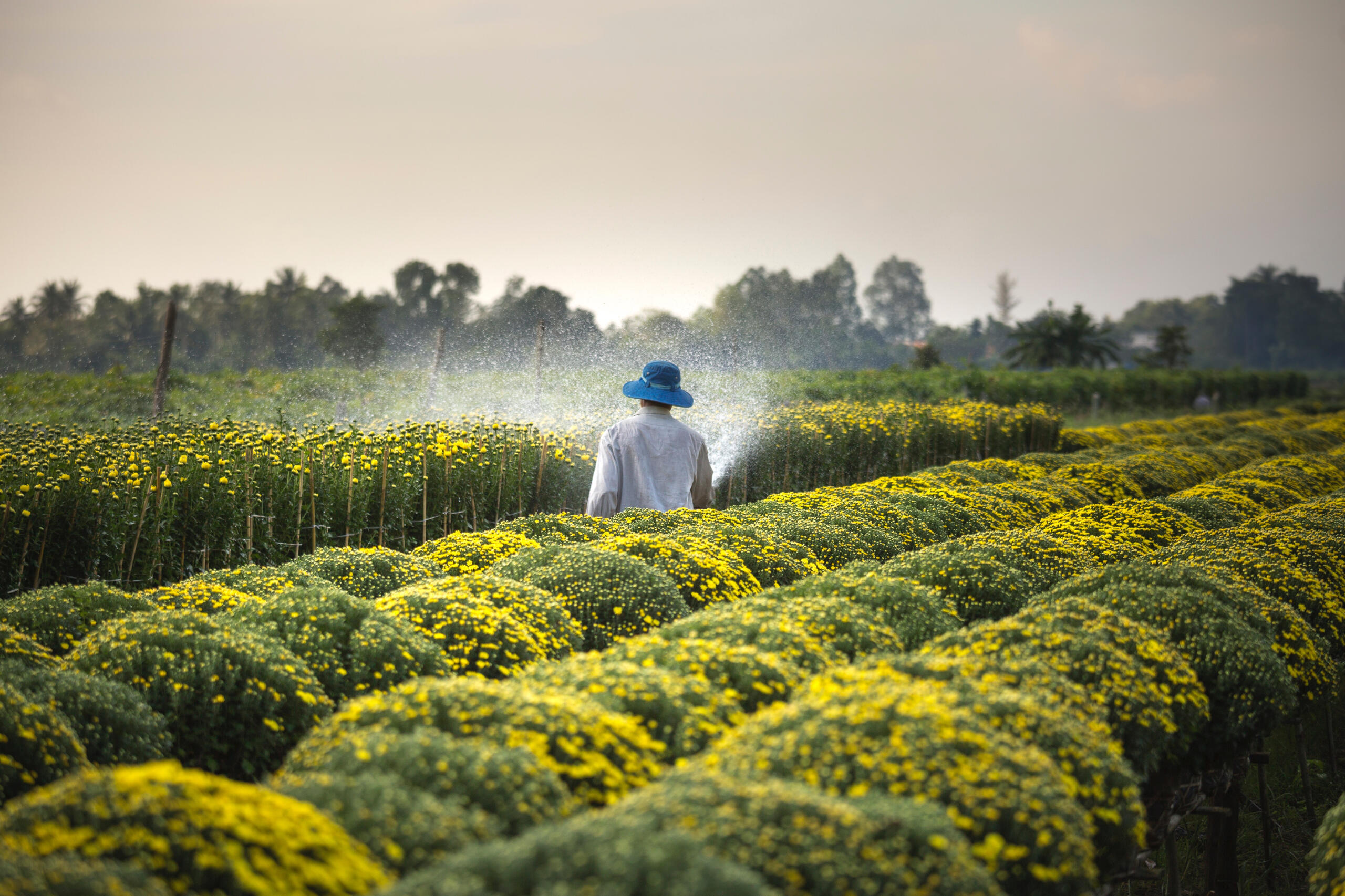
Reimagining Agriculture
Climate change poses a significant threat to agriculture in the Midwest, thereby the food security of the US and by extension the world. Accounting for 80% of the production of essential crops like corn and soybeans in the US and acting as a significant global supplier.The region has already experienced more frequent and intense heatwaves, droughts, and floods, which have led to crop failures and reduced yields. The future of agriculture in the Midwest depends on how well farmers and policymakers adapt to the changing climate and implement sustainable practices.One of the most critical efforts that can be made is to shift towards more sustainable and climate-resilient farming practices. Farmers can use techniques such as conservation tillage, cover cropping, and crop rotation to improve soil health, retain water, and reduce erosion. By doing so, they can not only mitigate the impact of climate change but also increase crop yields and reduce costs.Another way to improve the future of agriculture in the Midwest is to promote biodiversity on farms. This includes planting more diverse crops, using native plants, and creating habitats for wildlife. Biodiversity can help farmers by improving soil health, reducing pests and diseases, and improving the resilience of agricultural systems. Additionally, it can enhance ecosystem services that are vital to agriculture, such as pollination and pest control.Furthermore, investing in research and innovation can help farmers adapt to the changing climate. Research can help develop new crop varieties that are more resilient to heat, drought, and flooding. For example, scientists can work to develop crops that require less water or that can better tolerate high temperatures. Innovation can also help farmers to use resources more efficiently, reduce waste, and improve their profitability.Finally, it is essential to provide farmers with the resources and support they need to adapt to the changing climate. This includes access to information, training, and financial assistance. Policymakers can support farmers by providing grants for sustainable agriculture practices, creating markets for sustainable products, and investing in rural infrastructure.
The Dust Bowl
How Solar Panels Are Changing Agriculture
Can We Create The
"Perfect" Farm?

Local projects and conservation efforts
Generously provided by the Practical Farmers of Iowa
Hey there! Thank you for visiting. This part is still under construction! If there is something you wanna share, submit your tips at heartlandsfuture@gmail.com!
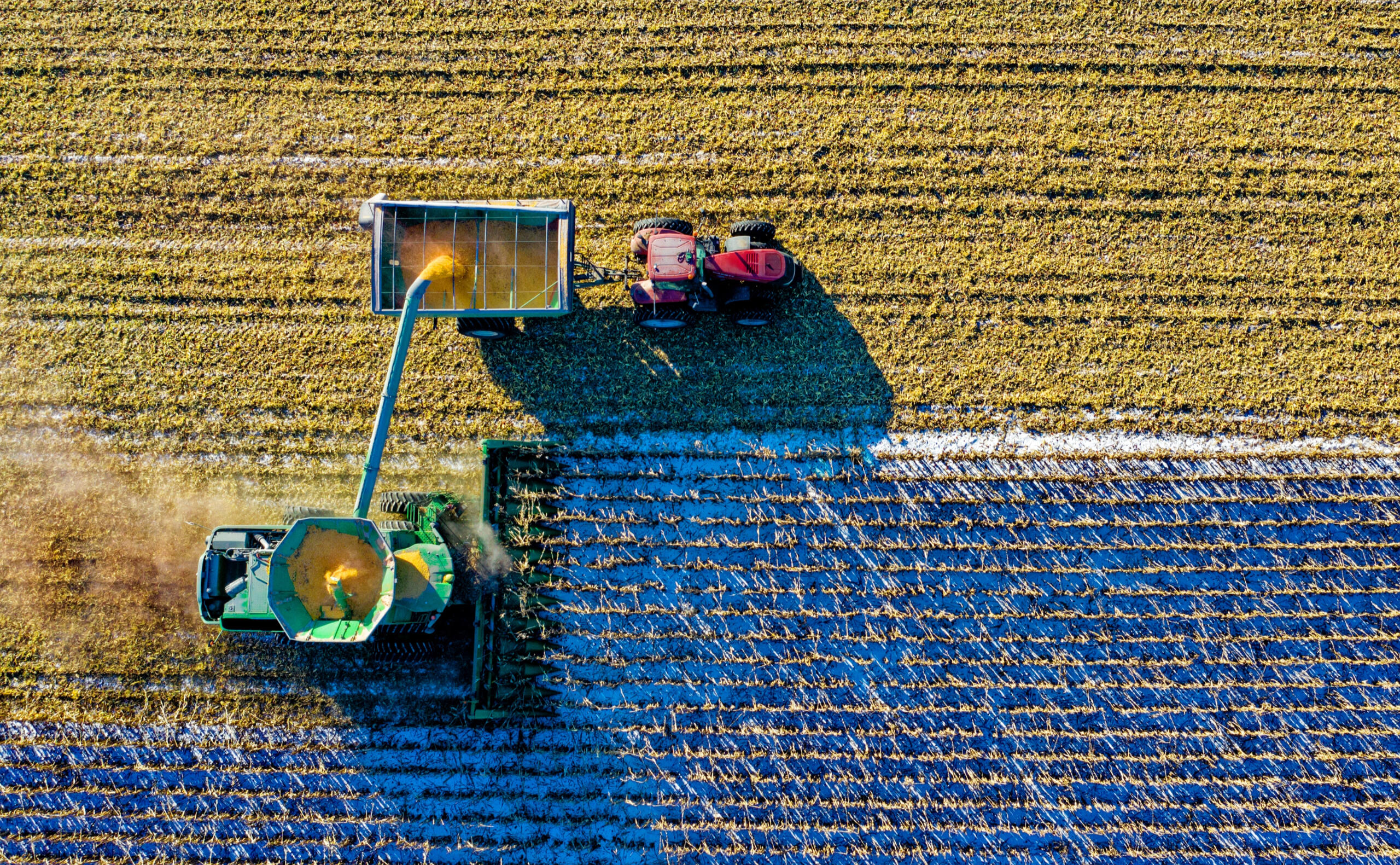

Reimagining Transportation
Transportation is a obvious and significant contributor to carbon emissions in the Midwest and across the United States. The region's transportation sector relies heavily on fossil fuels, such as gasoline and diesel, which produce greenhouse gas emissions when burned. However, as concerns about climate change grow, there is increasing pressure to transition towards more sustainable forms of transportation. In the coming years, transportation in the Midwest is likely to undergo significant changes, but how would they look like?One of the most significant changes that will likely take place is the increased use of electric vehicles (EVs). EVs emit significantly fewer greenhouse gases than traditional gas-powered vehicles, making them a more sustainable form of transportation. As battery technology improves and charging infrastructure becomes more widely available, more people in the Midwest will start using EVs for their daily transportation needs. The adoption of EVs will not only help reduce carbon emissions but also help reduce reliance on foreign oil and improve air quality.Another change that is likely to occur is an increase in public transportation options. In the past, the Midwest has relied heavily on personal vehicles for transportation, but as concerns about carbon emissions and their visible effects grow, there is increasing pressure to develop more sustainable transportation alternatives. This could include expanding public transit systems, building more bike lanes and walking paths, and promoting carpooling and ride-sharing options. By providing more sustainable transportation options, it is expected that the Midwest can reduce its carbon emissions and improve the overall quality of life for its residents.Finally, there is likely to be an increased emphasis on alternative fuels, such as biofuels and hydrogen. Biofuels, which are made from plant-based materials, emit fewer greenhouse gases than traditional fossil fuels and can be used in existing vehicles. Hydrogen fuel cells, which produce electricity through a chemical reaction between hydrogen and oxygen, emit only water as a byproduct, making them a highly sustainable form of transportation. As technology improves and production costs decrease, it is expected that more people in the Midwest will start using these alternative fuels to power their vehicles.

What is new on the market?
Aviation Biofuels
Flying on a plane is a real treat, but it's not great for the environment. Luckily, there's a solution: aviation biofuels! These renewable fuels could reduce greenhouse gas emissions from the aviation sector. However, they currently make up less than 0.1% of total aviation fuel consumption. The International Energy Agency (IEA) says we need to tackle a few challenges before we can start using aviation biofuels on a larger scale. For starters, they're pretty expensive to produce, and we need to make significant infrastructure investments. But don't lose hope just yet! The IEA believes that with more innovation and support from governments, airlines, and the energy industry, we can make aviation biofuels a viable low-carbon fuel source for the aviation sector. So, buckle up, and let's get ready for takeoff!
Smart Tyre Concept
magine a world where your car is not only a mode of transportation but also a source of energy! Thanks to innovative technology, this idea is becoming a reality with vehicle-to-grid (V2G) systems. V2G systems allow electric vehicles to not only receive power but also send power back to the grid, making them a valuable asset in balancing energy supply and demand. By connecting electric vehicles to the grid, we can create a more reliable and sustainable energy system.
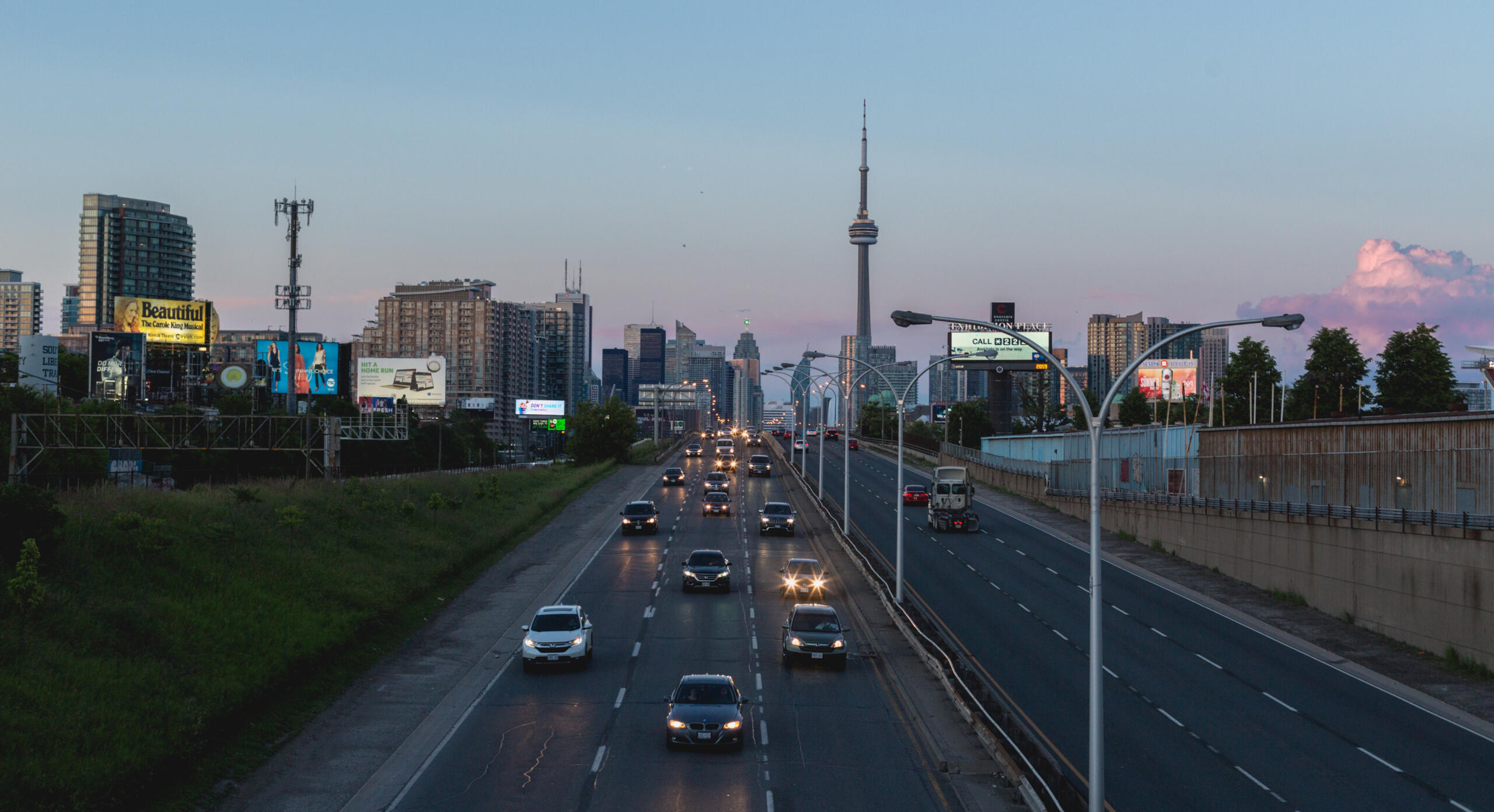
Solving the Riddle of Sustainable Car Travel
I am a sustainable machine,
That takes you places unseen.
With a little help from you and me,
I can be green, can't you see?What am I?
Safe gas, drive longer
Want to save money on gas and help the environment at the same time? The US Department of Energy has got you covered! They've published a guide on how to improve fuel economy in vehicles with easy tips like keeping your tires inflated and using the right motor oil. Plus, they suggest buying a more fuel-efficient car or trying out carpooling and public transit. Improving your car's fuel economy not only saves you money but also helps to reduce greenhouse gas emissions and decrease our reliance on foreign oil.
What about electric vehicles?
Looking to join the electric vehicle revolution? The Alternative Fuels Data Center has got you covered with their guide to electric vehicles. The guide explains the benefits of electric vehicles, including their lower operating costs and reduced emissions. It also provides information on charging infrastructure and incentives that may be available to electric vehicle owners. Whether you're a first-time buyer or a seasoned electric vehicle enthusiast, the Alternative Fuels Data Center has everything you need to know about electric vehicles.
State Policies promoting greener driving
Want to know how your state is promoting hybrid and electric vehicles? The National Conference of State Legislatures has published a guide to state policies that support these clean vehicles. The guide outlines the incentives, tax credits, and other policies that are available to electric and hybrid vehicle owners in different states. So if you're thinking about buying a clean vehicle or just curious about the policies in your area, be sure to check out this helpful guide!
The Green infrastructure is coming!
Illinois has joined other Midwest states in signing the REV Midwest agreement to accelerate electric vehicle adoption in the region. The states will work together on initiatives like fleet electrification and standardized regulations, with a focus on identifying opportunities for equitable EV charging station development and adoption. The coordinated efforts will help to promote a greener future for transportation in the Midwest.
safer streets with vision zero
Vision Zero is a global initiative to eliminate all traffic-related deaths and serious injuries. By shifting the focus from individual responsibility to a shared responsibility between road users and the transportation system, Vision Zero uses data-driven approaches to create safer streets for everyone. It's time to join the movement and make our streets safer for all!
What about no
car at all?
Want to live a car-free life? It's possible! In fact, it's a growing trend in cities across the world. Living without a car can save you money, reduce your carbon footprint, and even improve your health. However, it's important to recognize that this lifestyle isn't for everyone. Depending on where you live and your daily routine, going car-free may not be feasible. But for those who are able to make the switch, the benefits are undeniable. So, if you're ready to live life in the slow lane, here's how to do it!

All Aboard the Eco-Express
Join the eco-revolution with public transportation! As we strive to combat climate change, public transit has become a vital solution for reducing our carbon footprint. But expanding public transit can be a challenge, especially in rural areas where the infrastructure and topography may not be ideal. Despite these challenges, communities are finding innovative ways to make it work. So hop aboard the green movement and discover how public transportation is paving the way to a sustainable future.
The Bike is the ride
Electric bikes are taking over bike sharing programs across the United States! With their pedal-assisted technology, e-bikes are making cycling more accessible and enjoyable for people of all ages and fitness levels. E-bike sharing programs are now available in many major cities, making it easier than ever to get around on two wheels. Plus, with the added convenience of electric power, e-bikes are a great option for longer rides or hilly terrain. So why not join the e-bike revolution and explore your city like never before?
Zero Emission Bus
Want to help reduce air pollution and improve public transportation? Look no further than zero-emission buses! These eco-friendly vehicles are powered by electric batteries or hydrogen fuel cells, making them a clean and sustainable alternative to traditional diesel buses. Zero-emission buses are already in use in cities across the United States, and more are being added to fleets every year. By supporting the transition to zero-emission buses, we can make our communities cleaner, greener, and more livable for all. So hop aboard and join the zero-emission bus movement!
Why American Public Transit Is So Bad
America Always Gets This Wrong (when building transit)

The struggle of flying
Picture this: your sister's enchanting wedding in the romantic canals of Venice, your cousin's momentous graduation ceremony in the bustling streets of Japan, or a nostalgic reunion with old schoolmates amidst the awe-inspiring landscapes of Norway. These are the moments that make life extraordinary, and often, they require air travel to reach distant corners of the world.Flying holds a captivating allure, whisking us away to create cherished memories and connect with cultures across the globe. Yet, amidst the excitement, we must confront the environmental consequences of air travel, particularly its significant contribution to climate change. Engaging in conversations about flights and their impact on our planet is not just crucial; it's an opportunity to explore how we can navigate this intricate dilemma while preserving the beauty of our world.
Is Flying Wrong? - Glad You Asked S1
No-Jet Set
The article discusses the "no-fly pledge" movement, where people commit to reducing or eliminating air travel due to its environmental impact. Air travel contributes significantly to greenhouse gas emissions, surpassing industry efforts to reduce its environmental footprint. The movement highlights personal responsibility and aims to combat climate change. While alternative travel methods have limitations, proponents argue that the sacrifice is worthwhile to mitigate air travel's environmental consequences. The movement reflects a growing awareness of the environmental impact and individuals' efforts to make sustainable travel choices.
Flygskam
The National Geographic article explores emerging technologies that have the potential to make air travel more environmentally friendly. It discusses sustainable aviation fuels, electric and hybrid-electric aircraft, and improved air traffic management systems as promising solutions. The article also highlights the influence of concepts like "flygskam" (flight shame), which has sparked discussions about greener alternatives and prompted individuals to reduce their air travel. Flygskam has driven a broader conversation about sustainability in aviation and the need for greener technologies and practices.
Hey there! Thank you for visiting. This part is still under construction! If there is something you wanna share, submit your tips at heartlandsfuture@gmail.com!
About TRACES
The TRACES Center for History and Culture is a non-profit organization that is dedicated to exploring the complex and often overlooked stories of marginalized communities in the United States. Founded in 1996, Traces has worked tirelessly to bring to light the rich cultural histories of groups such as Native Americans, African Americans, and immigrants, among others.One of the center's primary goals is to engage with communities and help them to reclaim their histories. Through a variety of programs and initiatives, Traces works to provide communities with the tools and resources they need to investigate and preserve their cultural heritage. This includes everything from archiving documents and artifacts to conducting oral history interviews and producing educational materials.Traces is also committed to using history as a means of fostering dialogue and understanding across cultural and ethnic lines. The center's programs and exhibits seek to challenge commonly held assumptions and promote critical thinking about the past. By exploring diverse perspectives and experiences, Traces hopes to promote empathy, build bridges across communities, and promote a more just and equitable society.Overall, the work of the Traces Center for History and Culture is an essential contribution to the field of public history. By bringing underrepresented stories to the forefront and promoting critical engagement with the past, Traces is helping to create a more inclusive and informed society.
Past Tours
Prequels to the
GREATEST GENERATION
From the anti-German hysteria of WWI, through the 1918 flu pandemic, KKK and Prohibition, to civil unrest during the Great Depression, the TRACES BUS-eum exhibit features stories of the Greatest Generation. These subchapters of US social history from before and between each World War say much about America today.

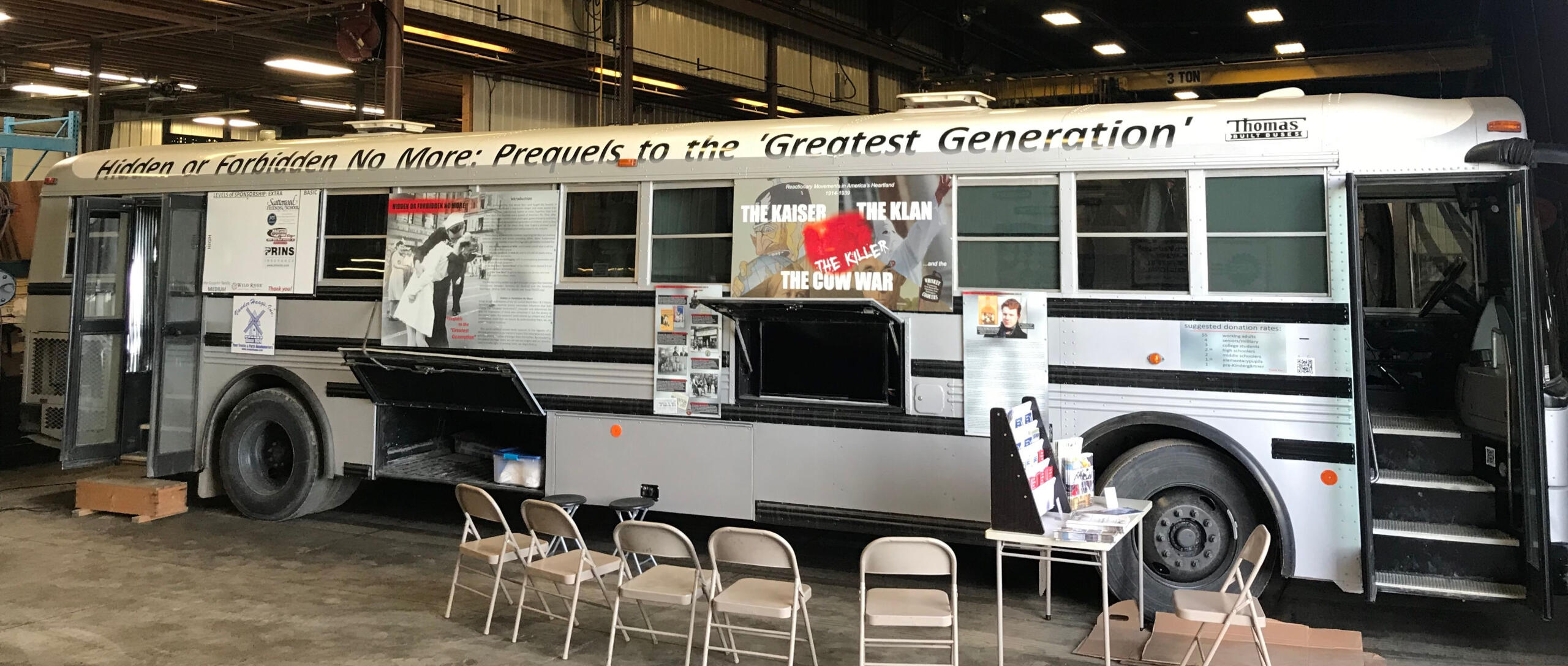
Our Team
Meet the dedicated student team, comprised of undergraduate and graduate students from a range of academic backgrounds, behind the project. We are passionate about creating a better and more sustainable future for our planet.
| Staff/Volunteer | Role |
|---|---|
| Joel Otto | funding |
| David Bernhardt | communication/ program management |
| Bruno Fischer | lodging |
| Svea Benett | social Media/ public relations |
| Jonas Bertig | schedule / communication |

Joel Otto

David Bernhardt

Svea Benett

Katharina Herz

Verena Herold

Jonas Bertig

Bruno Fischer
more coming soon
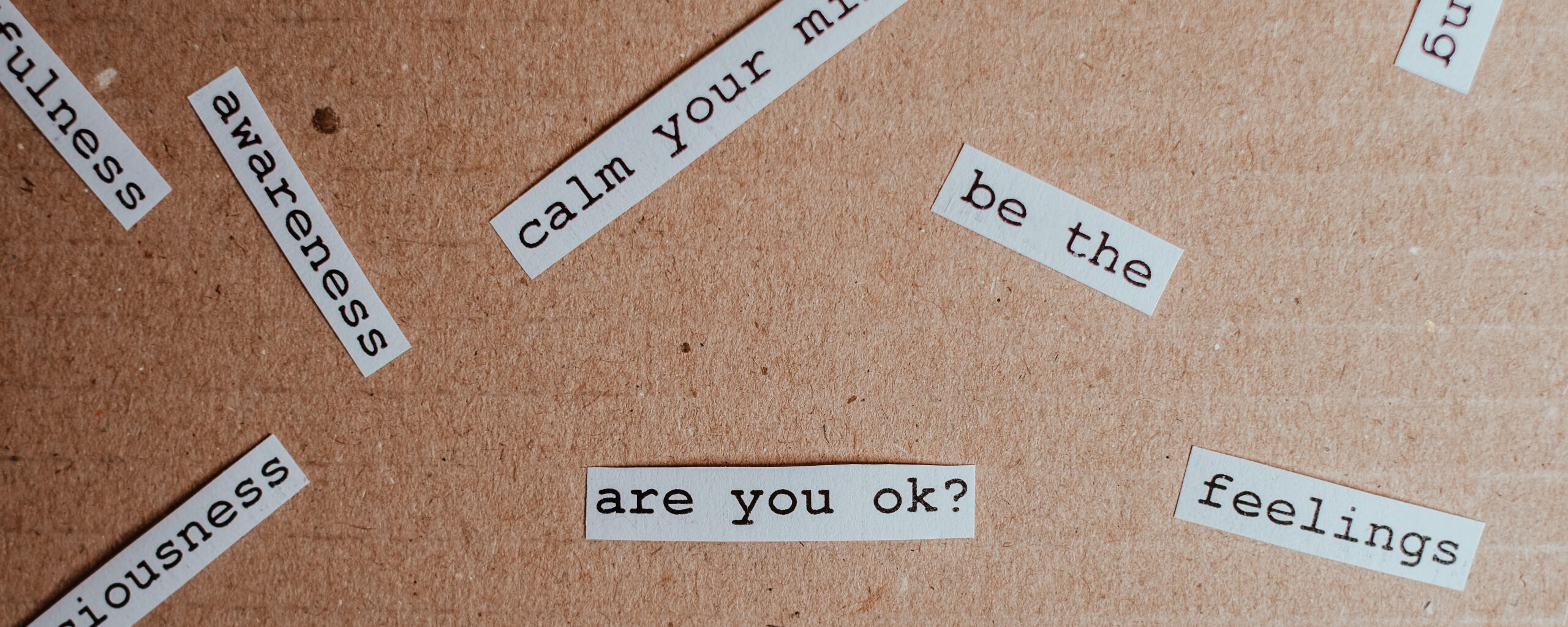
Reimagining Mental Health
Climate change can have significant impacts on our mental health. Extreme weather events, natural disasters, and other climate-related incidents can cause trauma, stress, anxiety, and depression. The effects of climate change on ecosystems and agriculture can also lead to food insecurity, which can exacerbate existing mental health issues. Additionally, the fear and uncertainty associated with the impacts of climate change can contribute to a sense of hopelessness and despair.One strategy to combat climate anxiety is focusing on the progress we already made. Click here to explore the latest good news in our fight against climate change!
How Climate Change Impacts Your Mental Health
Britt Wray: How Climate Change Affects Your Mental Health
National INstitute of Mental Health
The National Institute of Mental Health (NIMH) offers a range of resources, including articles, videos, and interactive tools, to help individuals maintain mental wellness on their website. It covers a wide range of topics, including stress management, self-care, coping with traumatic events, and getting help for mental health conditions. It also provides information on the latest research and clinical trials related to mental health.
Why Mental Health Matters
Good mental health is essential for our overall well-being and quality of life. It affects how we think, feel, and behave, and it impacts our relationships, work, and daily activities. When we have good mental health, we can manage stress effectively, enjoy positive relationships, and feel a sense of purpose and meaning in our lives. Good mental health also promotes resilience and the ability to cope with challenges and adversity like climate change. On the other hand, poor mental health can lead to a range of problems, including depression, anxiety, substance abuse, and suicide. It can also impact physical health and increase the risk of chronic diseases.
Hey there! Thank you for visiting. This part is still under construction! If there is something you wanna share, submit your tips at heartlandsfuture@gmail.com!

Reimagining Physical Health
As the planet continues to experience the effects of global warming and environmental degradation, it is becoming increasingly clear that these changes are having a significant impact on our physical well-being. From increased air pollution and extreme weather events to changes in food availability and infectious disease outbreaks, climate change poses new challenges to our health every day. We believe it's critical for individuals and communities to take steps to mitigate the effects of climate change and protect their health. Whether it's reducing your carbon footprint, advocating for climate policies, or supporting sustainable health practices, there are many ways to make a difference. We hope to inspire and empower individuals to take action and contribute to a healthier future for ourselves and the planet.
(Copyright by Dr Sam Myers, Academy of Medical Sciences & The Lancet International Health Lecture)
Midwestern health
Discover how climate change is affecting the Midwest region of the United States and its impact on public health. This website provides information on the health risks associated with climate change, including heat-related illnesses, respiratory problems, and mental health issues. Learn about the measures that can be taken to mitigate these risks, such as improving infrastructure and increasing public awareness. Explore this website to better understand and address the health impacts of climate change in the Midwest region.
Impact on US health
This comprehensive analysis provides an overview of the current state of knowledge on the topic of climate change and its effects on human health in the United States. It covers various aspects, including temperature-related illnesses and deaths, air quality impacts, extreme weather events, vector-borne diseases, water-related illnesses, food safety, and mental health impacts. In addition, the report discusses potential future impacts and emphasizes the need for adaptation and mitigation strategies to reduce the health risks associated with climate change.
BRACE
Explore the BRACE framework webpage to learn how public health officials can prepare and respond to climate change impacts. This resource provides four crucial steps, including public health assessment, adaptation plan development, plan implementation, and effectiveness evaluation. Find valuable examples and resources to safeguard communities' health against climate change on this webpage.
public Health tracker
The CDC's Environmental Public Health Tracking Data Explorer is a tool that allows users to access and explore data related to environmental public health tracking. Users can select a specific state, environmental hazard, and health outcome to view data in the form of graphs, tables, and maps. The data includes information on air quality, water quality, chemical exposure, and disease rates, among other environmental health indicators. The data explorer also provides additional resources and information on how the data is collected and analyzed.
WHO FACT SHEET
On this website, you can find information on the relationship between climate change and health, provided by the World Health Organization (WHO). The WHO's fact sheet provides a brief overview of the health effects of climate change, including increased risks of heat-related illnesses, malnutrition, vector-borne diseases, and respiratory diseases, and identifies populations particularly vulnerable to these effects. The fact sheet also recommends actions that can be taken to mitigate the health effects of climate change. Explore this website to learn more about the impact of climate change on human health and the measures that can be taken to address it.
Fast facts on climate and health
This PDF document published by the World Health Organization (WHO) provides an overview of the impact of climate change on human health and highlights key statistics and facts related to the topic. It covers various aspects of climate change and health, including air pollution, extreme weather events, food and water security, infectious diseases, and mental health. The document also presents measures that can be taken to mitigate the health impacts of climate change.
The air we breath
The World Health Organization (WHO) has released new data revealing that billions of people are still exposed to unhealthy air, posing a significant public health threat. This highlights the urgent need for action to address air pollution, which can cause respiratory and heart diseases, and stroke. The WHO is calling on governments, businesses, and individuals to take steps to improve air quality. Click here to find out more.
the cost of air pollution
Air pollution is a major problem that has significant health, social, and economic effects. Lockdowns imposed due to COVID-19 resulted in a temporary reduction of air pollutants, but air pollution levels have returned to pre-pandemic levels in most cities. This publication provides up-to-date estimates of the global economic costs of air pollution to support policy makers in prioritizing air pollution and investing in policies and interventions that will deliver benefits for societies, particularly for vulnerable groups.

Climate Crisis & US HEALTH CARE COSTS
This article discusses a study that estimates the healthcare costs associated with air pollution in the United States. According to the study, air pollution is responsible for an estimated 16,000 premature deaths and more than $36 billion in healthcare costs each year in the US. The study suggests that reducing air pollution levels could not only improve public health but also save billions of dollars in healthcare costs. The article highlights the importance of addressing air pollution as a public health issue and calls for policies to reduce pollution levels.
Hey there! Thank you for visiting. This part is still under construction! If there is something you wanna share, submit your tips at heartlandsfuture@gmail.com!

Reimagining Food
Are you ready to reimagine our food system in the face of climate change? Our current way of producing and consuming food isn't sustainable, but there are exciting ideas and innovations out there. On this subpage, we'll explore how we can transform our food system to be more environmentally friendly, socially just, and resilient. Let's create a brighter future through reimagining our food!

Better cooking
Cooking sustainably and minimizing food waste are crucial to creating a more sustainable food system. By making small changes in our cooking and food storage habits, we can reduce our carbon footprint and save money. Not only at home but also at school or in the workplace.
Healthy Schools
The CDC Healthy Schools program works with states, school systems, communities, and national partners to promote good nutrition. These efforts include publishing guidelines and tips on how schools and parents can model healthy behaviors and offer healthier school meals, smart snacks, and water access. Additionally the CDC is working with schools in an effort to increase the number of salad bars in school cafeterias.
Healthy Workplaces
Millions of US adults are buying foods and drinks while at work. The CDC develops and promotes food service guidelines that encourage employers and vendors to increase healthy food options for employees.
CDC-funded programs are working to make healthy foods and drinks (including water) more available in cafeterias, snack shops, and vending machines.
Food Waste Is The World's Dumbest Problem
The Struggle Of A Zero-Waste Restaurant
How A 17 Year Old Opened A Restaurant To Fight Food Waste
Try it out with SuperCook!
SuperCook is a web application that helps users find recipe ideas based on ingredients they already have at home. Users can input the ingredients they have, and the website will generate a list of recipes that can be made with those ingredients. The website also allows users to filter results by dietary preferences and provides nutritional information for each recipe. Supercook aims to reduce food waste by encouraging users to use up ingredients they already have rather than buying new ones. The website is free to use and available on desktop and mobile devices.

All about the diet
Creating a sustainable food system requires us to be mindful of our diets, but that doesn't mean being overly restrictive. By making small changes, such as reducing our meat consumption, buying local produce, and eating more plant-based meals, we can have a positive impact on both our health and the environment. In this subsection, we'll explore how to make sustainable dietary choices that are enjoyable and beneficial.
Proper Nutrition
Proper nutrition is vital for maintaining good health and well-being. A balanced diet can help prevent chronic diseases like heart disease, diabetes, and some types of cancer. It also supports the immune system, helping the body fight off infections and illnesses. In addition, proper nutrition is essential for maintaining healthy body weight and improving mental health. Eating a varied and balanced diet, coupled with regular exercise, is the foundation of good health and longevity.
Cutting down on Meat
Reducing our consumption of meat is essential for protecting the climate. The production of meat generates significant greenhouse gas emissions, primarily through the release of methane from livestock. Additionally, the production of animal feed requires vast amounts of land, water, and energy, contributing to deforestation, water scarcity, and other environmental problems. By reducing our meat consumption, we can decrease demand for meat production and help mitigate the impact of climate change. Furthermore, incorporating more plant-based foods into our diets can provide health benefits and promote sustainable agriculture.
The Diet That Fights Climate Change
Why Beef Is The Worst Food
For The Climate
Is Meat Really That Bad?

How Breastfeeding Benefits the Environment
Breastfeeding not only benefits the health of mother and child but is also an eco-friendly choice. Choosing to breastfeed over formula feeding can reduce waste, conserve resources, and promote sustainable food systems. In this subpage, we will explore the environmental impact of formula production, packaging, and disposal, and the role of breastfeeding in reducing greenhouse gas emissions. By understanding the positive impact of breastfeeding on the environment, we can make informed choices that benefit both our families and the planet.
Hey there! Thank you for visiting. This part is still under construction! If there is something you wanna share, submit your tips at heartlandsfuture@gmail.com!

Reimagining Neighborhoods
As the world continues to grapple with the devastating effects of climate change, there is growing interest in reimagining neighborhoods to better adapt to these changes. One way this is being done is through community gardening, which not only provides access to fresh produce but also helps reduce the carbon footprint. Additionally, embracing the environment by incorporating green infrastructure such as parks and trees into neighborhoods can help mitigate the impacts of climate change. In this section of our exhibit, we will explore the various benefits of these approaches and how they can lead to more sustainable and resilient neighborhoods.
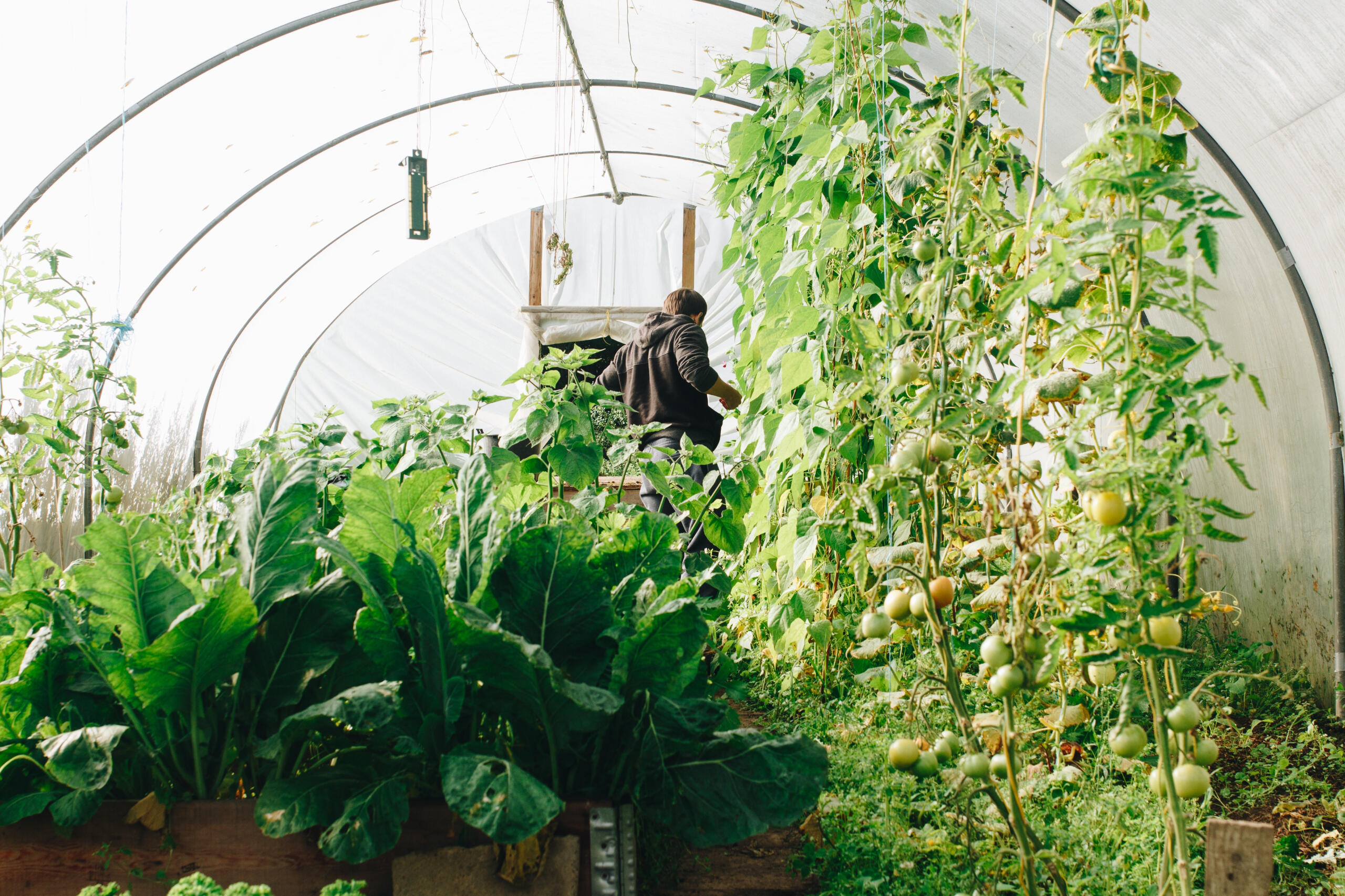
Gardening
NRPA
This is a great article that highlights the many environmental benefits of community gardens! It talks about how these gardens can help reduce greenhouse gas emissions, create homes for wildlife, and improve the quality of soil. Community gardens also promote healthy ecosystems, reduce food waste, and provide opportunities for environmental education. Overall, community gardens are an awesome way to make a positive impact in our communities and live more sustainably!
Garden Pals
If you're a gardening enthusiast, you'll be happy to know that over 77 million households in the US share your passion! A recent study has revealed that gardening has become increasingly popular in recent years, with vegetable gardening being the most popular type. Not only is gardening a fun and rewarding activity, but it also has many benefits, such as reducing stress, providing exercise, and improving mental health.
How Radical Gardeners Took Back New York City
Why Cities Should Plant More Trees
The World's Most Sustainable City
Take a look

15/20-Minute neighborhood
Low Traffic Neighborhood
The Living Streets organization provides information about Low Traffic Neighborhoods (LTNs) which limit the amount of motorized traffic on residential streets. They explain the benefits of LTNs, such as creating safer and healthier environments for residents, reducing air pollution and carbon emissions, and promoting more active forms of transportation like walking and cycling. The organization also provides examples of successful LTNs and explains how they can be implemented in different neighborhoods.
15-Minute neighborhood
Have you heard of the 15-minute neighborhood concept? It's a great idea aimed at making daily necessities, like schools, grocery stores, and parks, easily accessible within walking or biking distance. This not only encourages social connections within the community but also helps to improve safety, particularly for vulnerable groups like children, the elderly, and women. Imagine a neighborhood where you can bike to the grocery store or take a stroll to the park for a picnic without having to rely on transportation. It's a wonderful way to create a more livable and friendly community.
But, what are 15-minute cities? An introduction by C40 Cities
An example by the Victorian Government for Melbourne
A video essay by Alan Fisher about Pitman NJ
Cites And Heat
Cities around the world are increasingly grappling with the daunting challenge of heatwaves. As global temperatures rise due to climate change, urban areas are becoming hotspots for extreme heat events, posing significant risks to public health, infrastructure, and overall well-being. Heatwaves can result in heat-related illnesses, strain on energy systems, reduced air quality, and even loss of life. The urban heat island effect, where cities experience higher temperatures than surrounding rural areas, exacerbates the problem. Cities are now faced with the urgent task of implementing effective strategies to mitigate and adapt to heatwaves, including urban planning measures, green infrastructure initiatives, and community engagement efforts to safeguard the health and resilience of their populations.
Why Cities Should Plant More Trees
How America's Hottest City
Is Trying To Cool Down
Hey there! Thank you for visiting. This part is still under construction! If there is something you wanna share, submit your tips at heartlandsfuture@gmail.com!

Reimagining Housing
Housing has a significant impact on our planet, and with climate change, it's time to reimagine our approach. Innovative concepts like passive house design, green building, and biophilic design are emerging to create sustainable and resilient homes. These concepts prioritize energy efficiency, renewable energy, and connection to nature to improve residents' quality of life while reducing carbon footprints. In this subpage, we will explore how these new approaches are changing the way we think about housing and how we can contribute to a sustainable future for our planet and communities.
U.S. Zoning, Explained
Zoning
Single-family zoning perpetuates racial and economic segregation, and restricts the supply of affordable and sustainable housing. The need for reform is often framed as a progressive issue. In this article, published on The American Conservative, Charles Marohn makes the conservative case against single-family zoning:
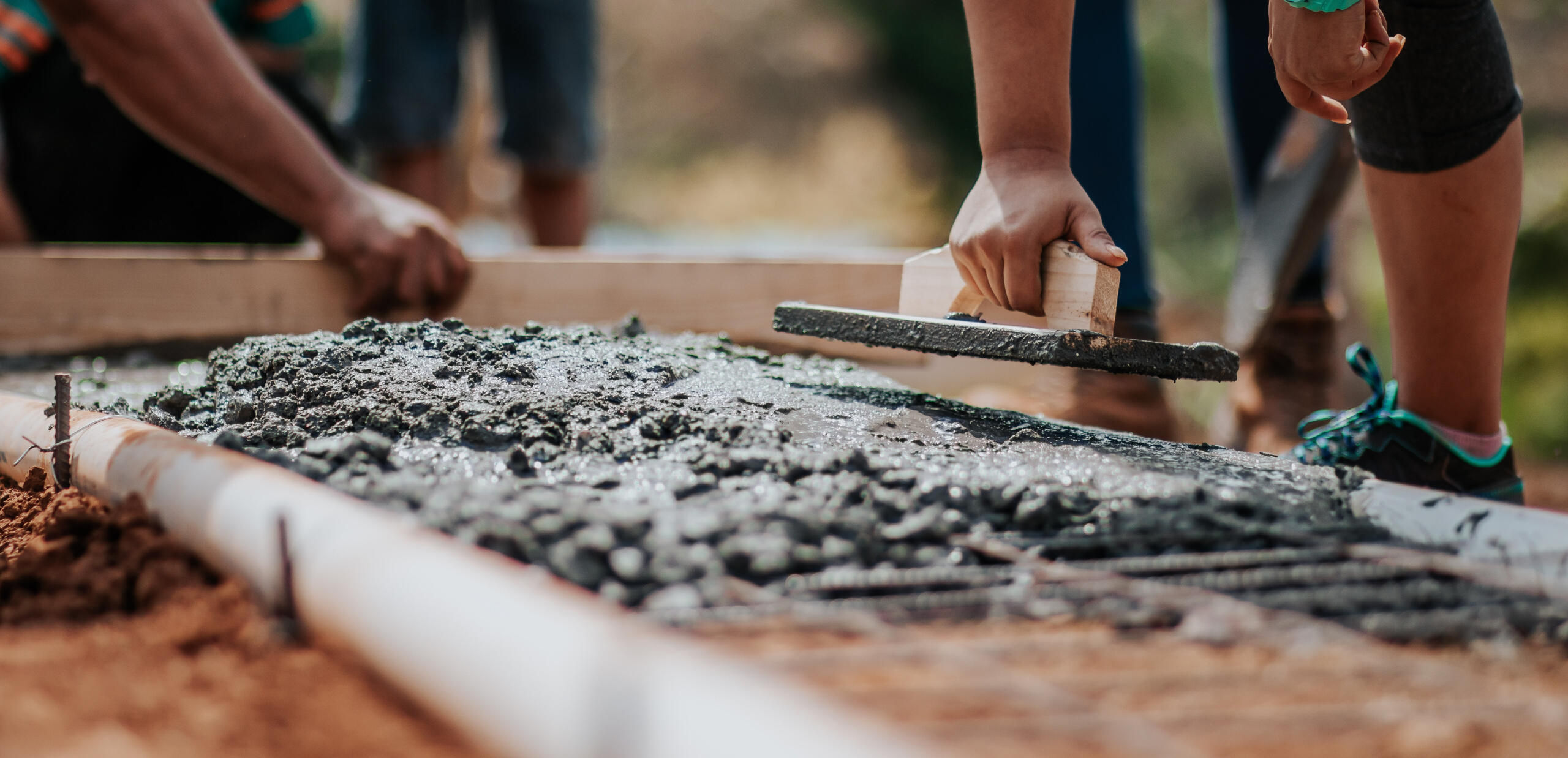
Green Living 101: How to Make Your Home More Sustainable and Chic
Advocate for Sustainable Housing Development at Local Meetings
Advocate for sustainable housing development at your local HOA and Zoning meetings.They often go by different names and are difficult to find.
Search your ‘zip/town/city’ and these search terms: Community Board Meeting, City Planning Board Meeting, City Planning Commission, Zoning Committee Meeting, Community Engagement Meeting, Housing Reform Groups, Density Advocacy.
Empower Communities to Create Sustainable Living Spaces
Joining organizations that promote safe, sustainable, and equitable community development can help you connect with like-minded individuals, learn about local issues, and advocate for policies that promote sustainability, safety, and equity. Look for local advocacy groups, community development corporations, and environmental justice organizations to get involved and make a difference in your community.
How To Make Your Home Climate Change Ready
Hey there! Thank you for visiting. This part is still under construction! If there is something you wanna share, submit your tips at heartlandsfuture@gmail.com!

Reimagining Work
In today's fast-paced world, technology has revolutionized the way we work, making traditional work models increasingly outdated. Many companies and organizations are now exploring new models of work that prioritize flexibility, collaboration, and employee well-being. Our website provides valuable insights into the world of remote work and explores how it can benefit employers and employees alike. We offer a comprehensive guide that covers best practices and case studies to help you navigate the world of remote work and reimagine how work can be done in the modern era. Whether you're a business owner, manager, or employee, join us as we explore the exciting possibilities of remote work!
Infography by Toptal

What happened in 2022?
Get ready for some mind-blowing statistics about remote work! Did you know that the number of remote workers is increasing rapidly, with more people than ever before choosing to work remotely? And the benefits of remote work are incredible - from boosting productivity to allowing for more flexible schedules and better work-life balance. But wait, there's more! As awesome as remote work can be, it also comes with its fair share of challenges, like feeling isolated or struggling to collaborate with others. Don't worry though, this article has got you covered with all the details on the pros and cons of remote work.
The Realities of Remote Work
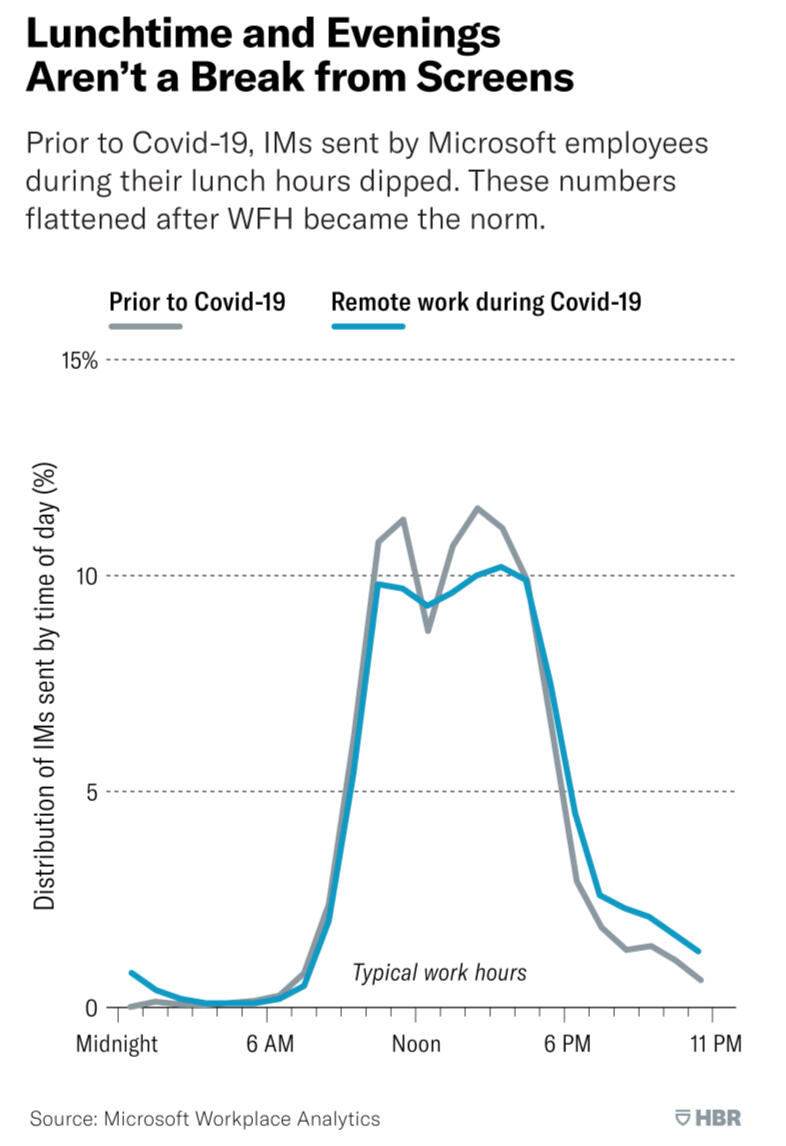
Statistic by Harvard Business Review
Two perspectives on remote work
How remote work destroyed my mental health
The surprising power of remote work

Let us hear your stories about remote work!
Hey there! Thank you for visiting. This part is still under construction! If there is something you wanna share, submit your tips at heartlandsfuture@gmail.com!

Reimagining Fashion
The fashion industry is a major polluter, but innovative concepts like circular fashion, sustainable materials, and ethical production are emerging to reimagine the future of fashion. These approaches prioritize reducing waste, conserving resources, and promoting fair labor practices. In this subpage, we will explore how sustainable fashion can transform the industry, and how we can contribute to a more positive impact on the environment and society. Join us in creating a more stylish, sustainable, and ethical future for fashion.
The Hidden Cost Of Fast Fashion
The Environmental Cost
Of Free Two-Day Shipping
Made In Bangladesh
Is Fast Fashion Destroying
Our Environment?
Fast Fashion, explained
This article examines how fast fashion, epitomized by H&M and Zara, has become a normal part of the fashion industry. It explains the negative impact of fast fashion on the environment and society, as well as the reasons for its popularity, including low prices and trendy styles. There is a growing demand for sustainable and ethical fashion as consumers become more aware of the impact of their purchasing habits.
Your Stuff is actually worse now
The article highlights how technological advancements have made it easier and cheaper to produce clothes quickly and in large quantities, but at the expense of quality. The article also argues that consumer demand for low-priced and trendy clothing has created a market for fast fashion, which prioritizes quantity over quality.

How to Dress for Less Without Harming the Planet
Hey there! Thank you for visiting. This part is still under construction! If there is something you wanna share, submit your tips at heartlandsfuture@gmail.com!
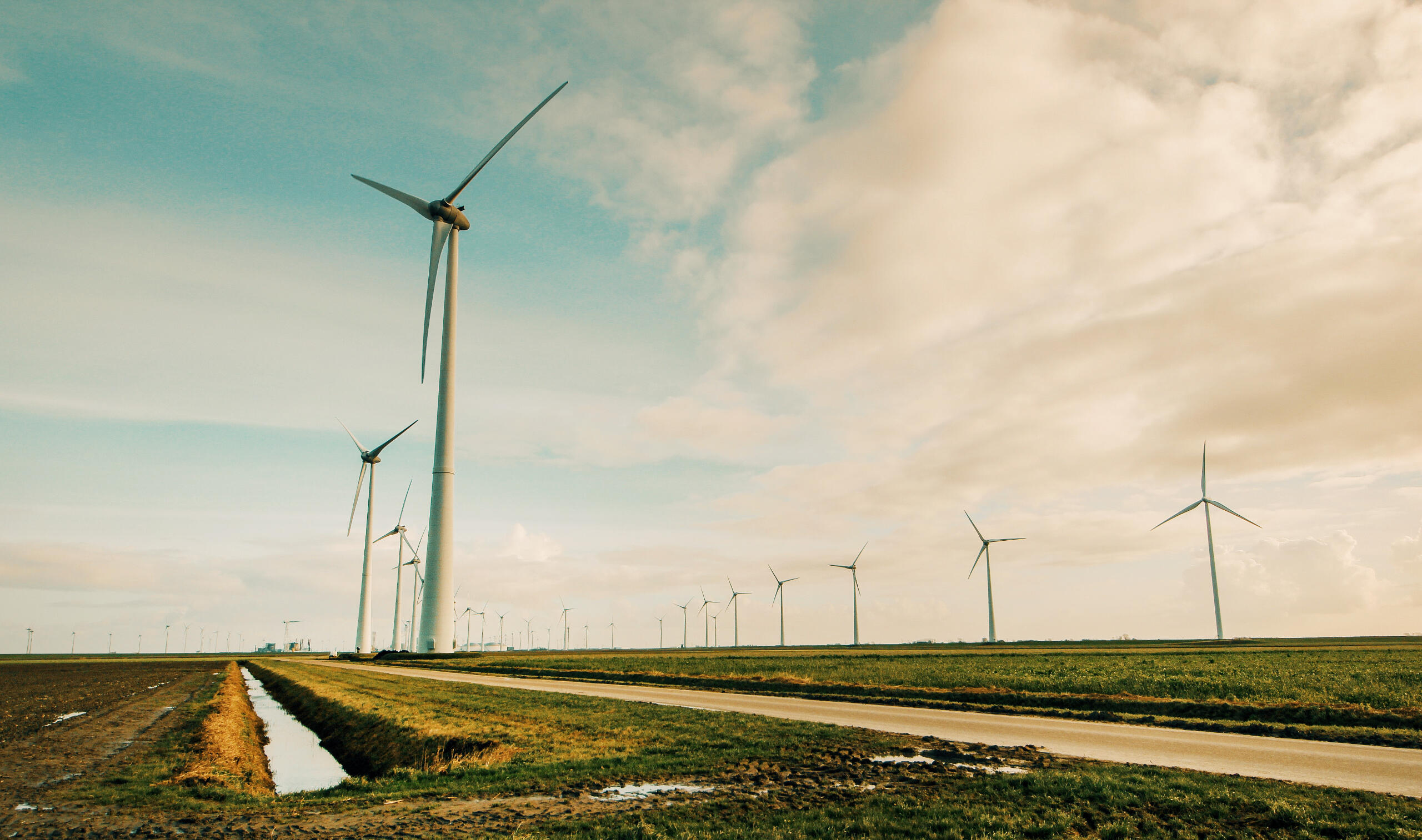
Reimagining Energy
Welcome to our clean energy subpage, where we take a closer look at how renewable energy sources like wind turbines and solar panels generate clean, sustainable electricity. Here, you'll find a range of resources that explain the inner workings of these innovative technologies in plain language, including videos, articles, and infographics.Are you curious about how wind turbines harness the power of the wind to generate electricity? Check out our resources on wind energy! Or maybe you're interested in learning more about how solar panels turn sunlight into electricity? We have plenty of resources, including diagrams that show how photovoltaic cells work, and how solar panels are installed.So take a look around and explore all of the resources we have to offer. Whether you're a student, a professional, or just someone who's interested in learning more about renewable energy, we're here to help you on your journey towards a greener, more sustainable world.
The Green New Deal, Explained
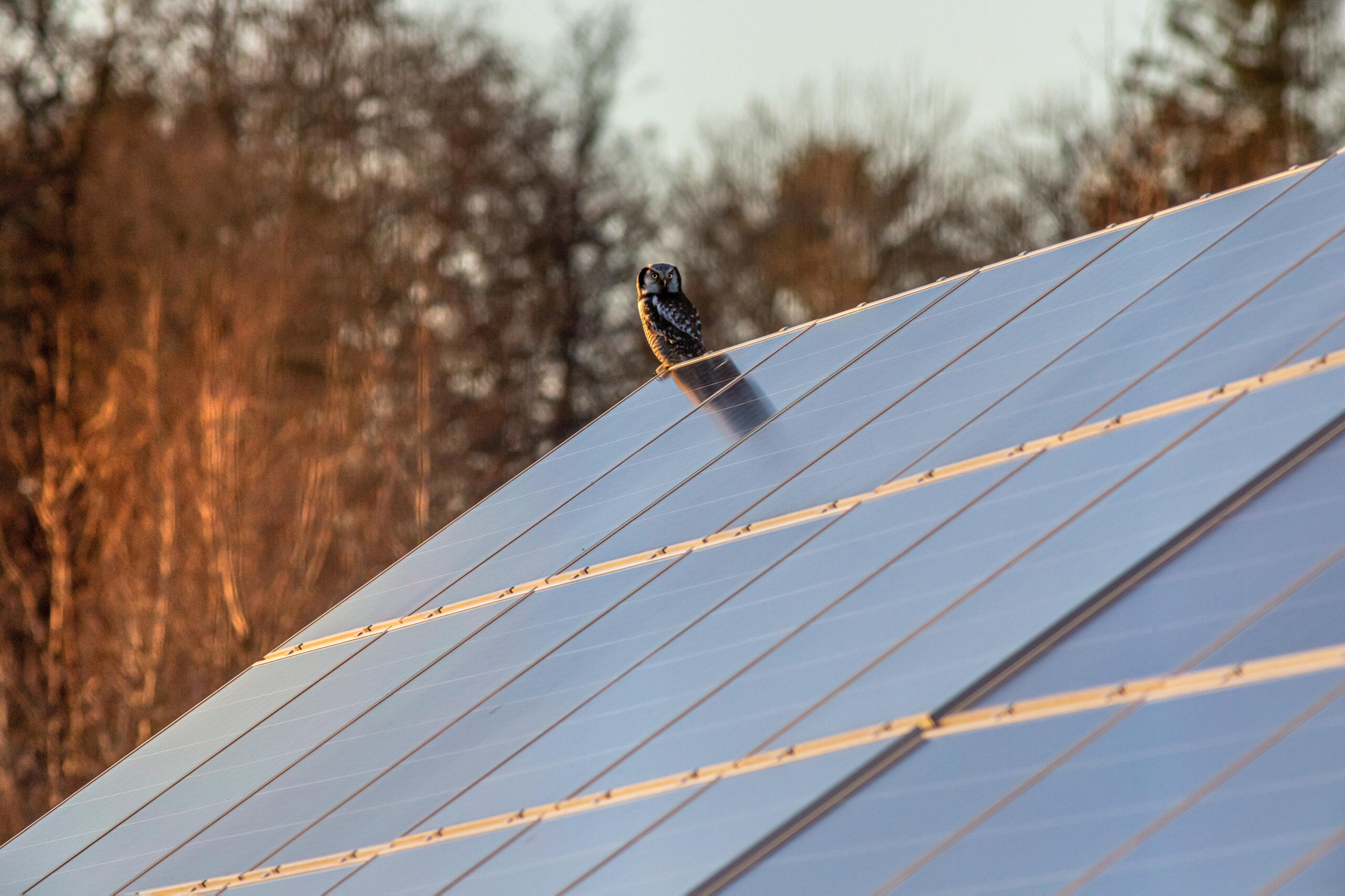
Solar Energy
Welcome to the "solar energy" section! This page is dedicated to providing you with the latest information on solar energy production, adoption, and policy developments. From Germany to the Midwest region of the United States, we explore the latest trends and opportunities in the field of solar power.
SEIA
Solar Energy Industries Association (SEIA), a national organization that advocates for the promotion of solar energy in the United States. The website provides comprehensive information on solar energy, including current trends, policy initiatives, data, and analyses. SEIA works to create favorable conditions for the solar energy industry and collaborates with government agencies, businesses, and other organizations to promote the growth of solar energy in the United States.
SETO
The Solar Energy Technologies Office (SETO) is a department of the U.S. Department of Energy that aims to advance the research, development, and deployment of solar energy technologies in the United States. Their website provides information on solar energy research, funding, and resources. SETO works to increase the efficiency and affordability of solar energy systems and expand the use of solar energy across the country.
How do solar panels work? Richard Kemp explains!
Matt Ferrell reflects on 5 Years of Solar Panels
Take a look!

@Undecided with Matt Ferrell
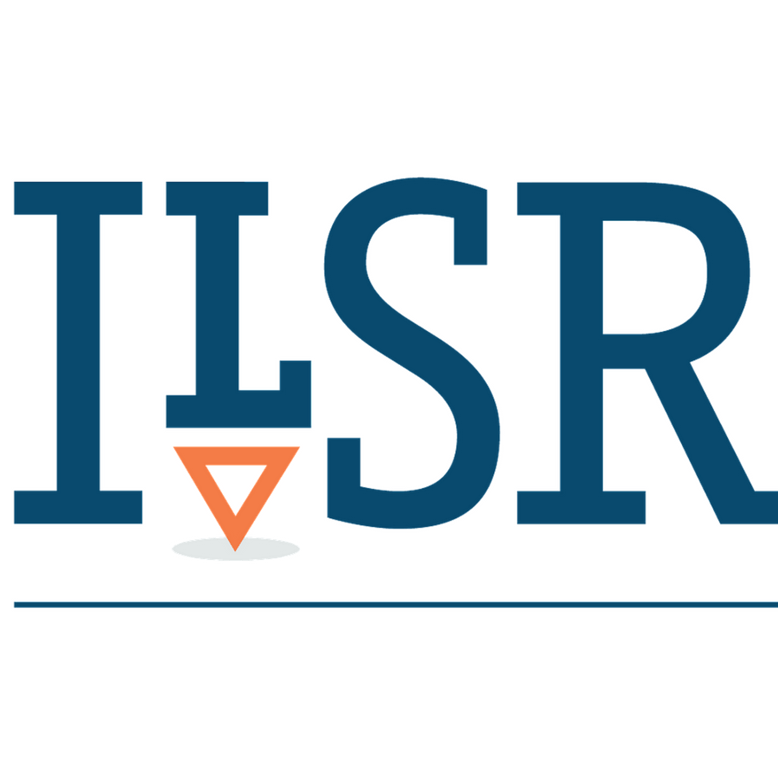
Institute for local self-reliance
MREA is a non-profit organization that promotes renewable energy in the Midwest region of the United States. They offer education, training, and resources on solar, wind, and geothermal energy. MREA also provides advocacy and policy support and their website offers practical tips for installing and maintaining renewable energy systems.
Or
Are you curious about how much electricity costs in Iowa? Look no further than this website, which breaks down the average cost of electricity by utility company and customer type. It also compares local electricity prices to the national average, making it a great resource for anyone looking to understand the cost of electricity in the state. Whether you're a homeowner or a business owner, understanding electricity costs is important, especially if you're considering making the switch to renewable energy sources like solar panels.
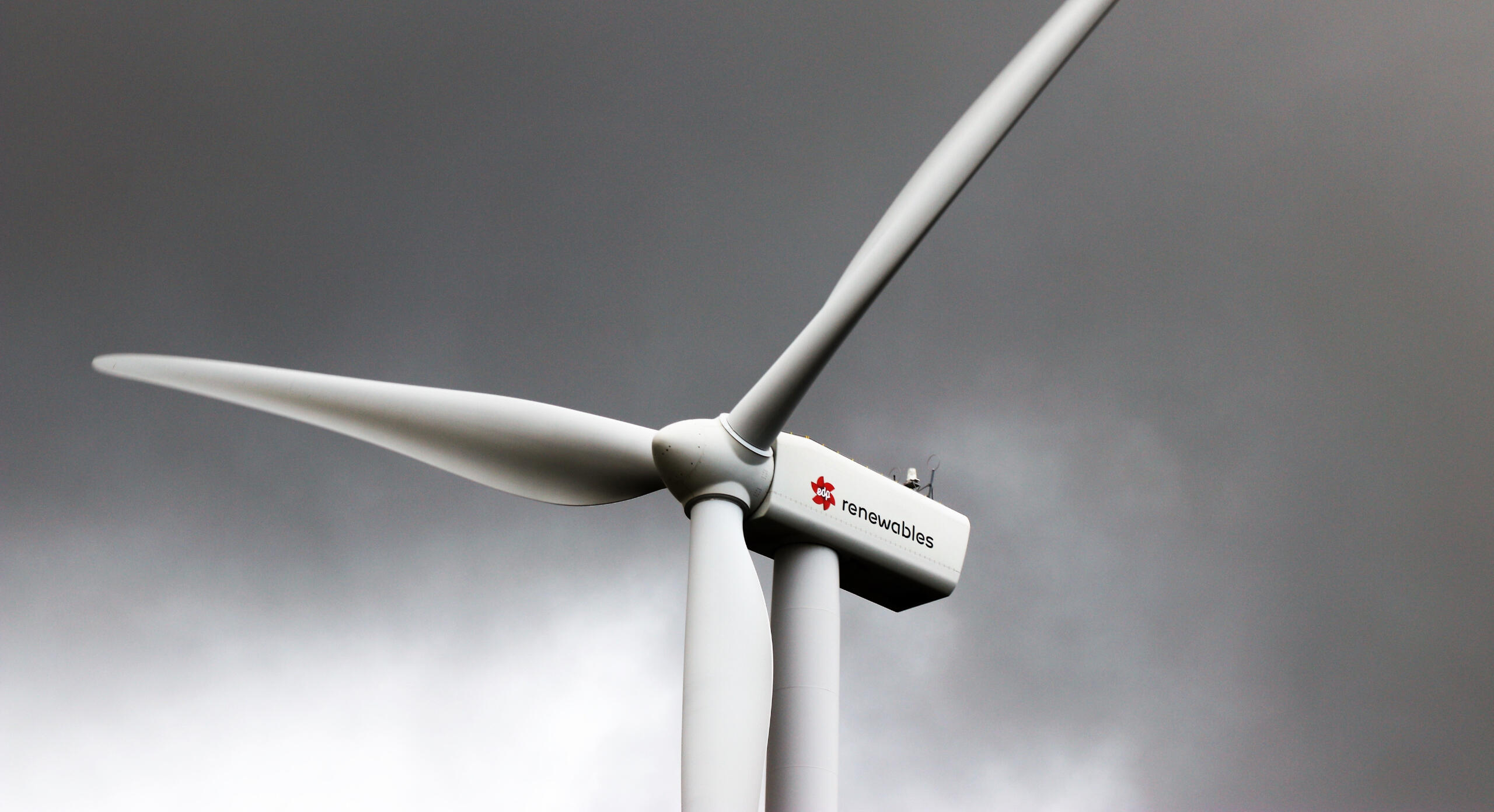
Wind Energy
Wind energy is one of the fastest-growing sources of renewable energy in the world, and for good reason. Not only does wind energy provide a sustainable alternative to fossil fuels, but it also has the potential to bring personal enrichment to individuals and communities. In this subsection, we explore the current developments in wind energy technology, as well as the benefits of wind energy for individuals and communities. Whether you are interested in the technical aspects of wind turbines or the social and economic benefits of wind energy, this section has something for everyone. So let's take a closer look at the power of wind energy and how it can help us build a cleaner, more sustainable future.
Wind explained
This article is about wind power and where it is harnessed. It explains that wind power is generated in areas with consistent wind speeds like coastlines, mountain gaps, and open plains. The United States is one of the countries where wind power is growing in importance, and it is the second-largest source of renewable electricity generation after hydroelectric power. The article also mentions the states in the US with the largest wind power capacity.

How Do Wind Turbines Work?
Wind Energy Documentary
The Future of Solid State Wind Energy - No More Blades

Statistics & Others
Stay up to date with the latest developments in renewable energy with our news, jobs, and statistics subsection. We cover everything from the latest renewable energy projects and contracts, to updates on policies and regulations. Additionally, we provide information about the current state of renewable energy jobs, including job growth and industry standards.
Jobs
This article is all about good news for the Midwest - renewable energy jobs are on the rise! Specifically, the state of Iowa is seeing a significant increase in jobs related to renewable energy. Not only does this industry create new job opportunities, but it also helps to boost the local economy and protect the environment by reducing greenhouse gas emissions. With Iowa's abundant wind resources and supportive policies, the state has the potential to become a national leader in renewable energy. The Clean Grid Alliance is doing its part to promote renewable energy expansion in the Midwest and ensure continued growth and success for this important industry.
News
Stay up to date with the latest news in the renewable energy industry, from new projects and contracts to updates on policies and regulations. We cover everything from the latest solar panel technology to wind farm projects and future plans for reducing greenhouse gas emissions and expanding renewable energy sources.
Is Germany's Nuclear Exit A Mistake?
Statistics
Hey there! Thank you for visiting. This part is still under construction! If there is something you wanna share, submit your tips at heartlandsfuture@gmail.com!
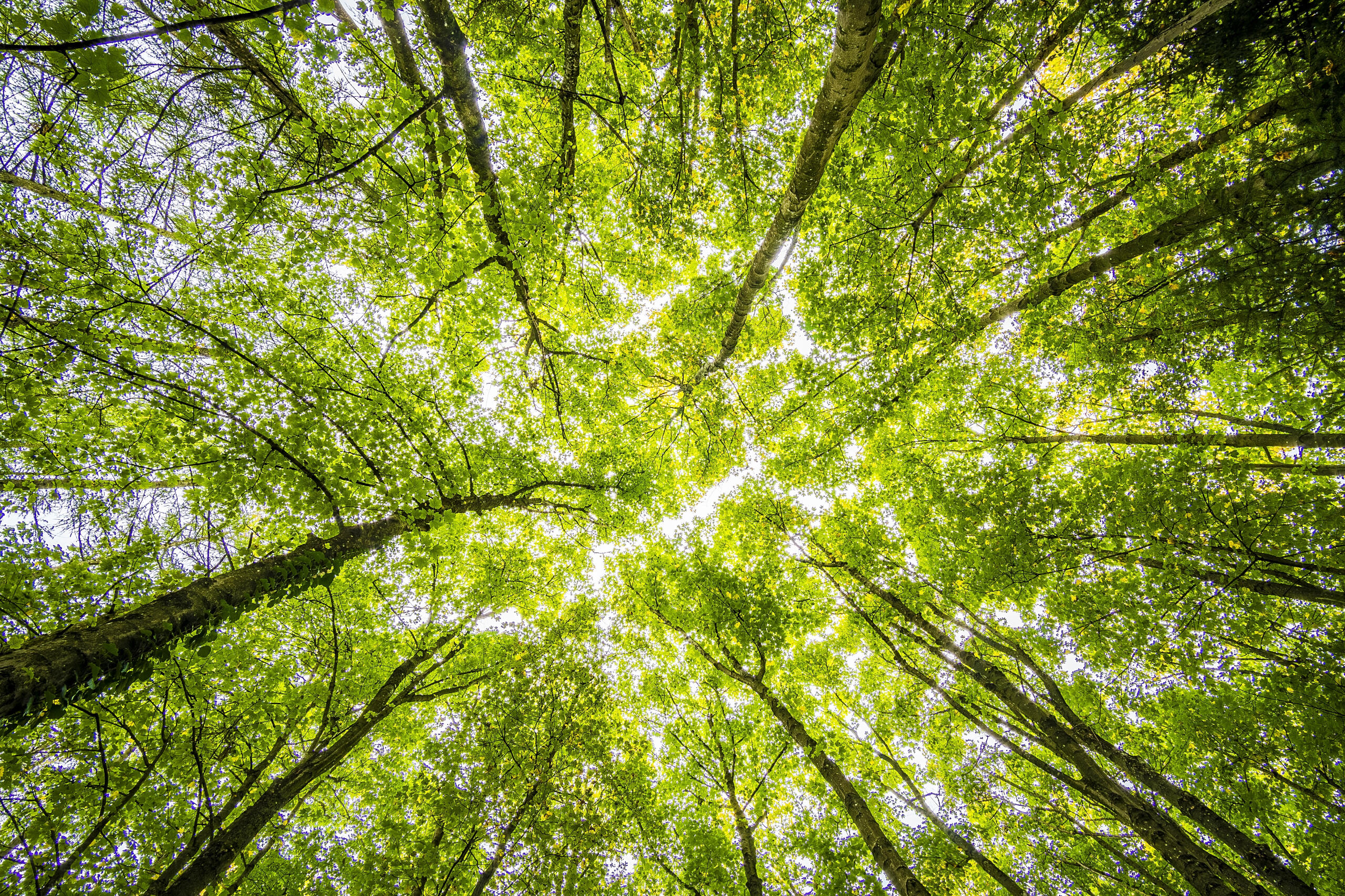
Reimagining Nature
Are you looking for ways to fight climate change, but feeling overwhelmed by the scale of the problem? Don't worry - you can make a difference on a personal level by reimagining nature. Our section on "Reimagining Nature" offers practical tips, informative videos, and engaging articles to inspire you to take action. Whether you're interested in reducing waste, or supporting conservation efforts, we've got you covered. Don't wait for the government to act - start making a positive impact on the planet today.
A Natural Solution To Climate Change
What Are Nature-Based Solutions To Climate Change?
How one couple restored an entire forest
Anyone can make a difference!

Rest in green
As our society becomes increasingly aware of the impact we have on the environment, people are seeking out new ways to reduce their ecological footprint, even in death. Green burials have become a popular choice for those who want to leave a smaller impact on the planet. In this section, we will explore the latest trends in green burials, including biodegradable coffins, natural burial grounds, and other environmentally-friendly options.
Green Burial Trends
"Rest in Compost: The Latest Eco-Friendly Afterlife Trend" explores the rising popularity of "natural organic reduction," an eco-friendly burial option that allows your body to decompose into compost. The resulting material can nourish plant life and promote soil health. Several US states have already legalized this innovative burial method, making it an intriguing new option for environmentally conscious individuals.
Echo-Death Takeover: Changing the Funeral Industry
A Burial Practice That Nourishes The Planet - Caitlin Doughty
Hey there! Thank you for visiting. This part is still under construction! If there is something you wanna share, submit your tips at heartlandsfuture@gmail.com!
Director @ traces Dr. Michael Luick-Thrams
Director of the non-profit TRACES Center for History and Culture and the German Museum of "Haus der Spuren" in Bad Langensalza Dr. Michael Luick-Thrams.more info to follow
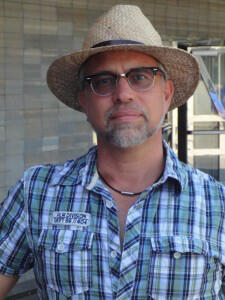
A 1979 Article on the pioneering work on his hometown farm talking about the end of the Fossil-Fuel Age.
Michael 1984 ISU undergrad
independent-study paper
called for a transition to
wind, solar and methane
energy + the revitalization
of rural culture.




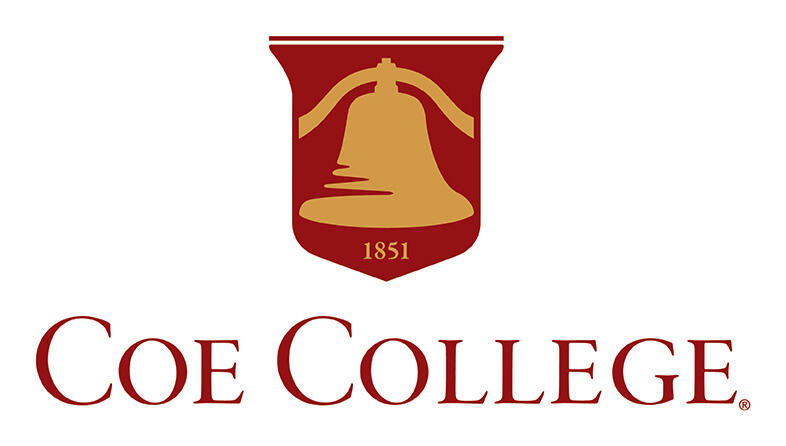

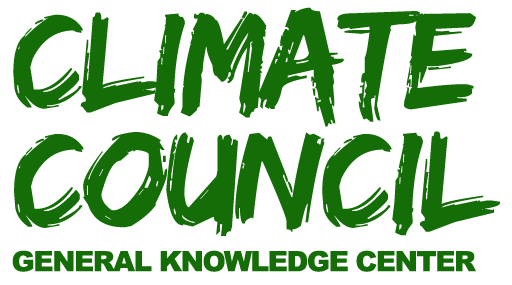
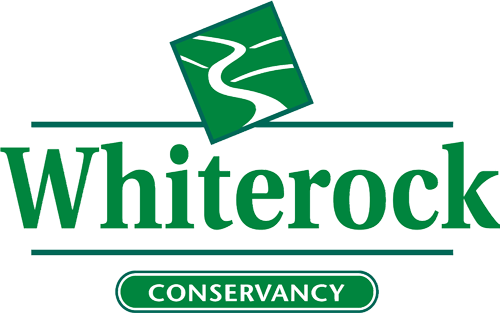









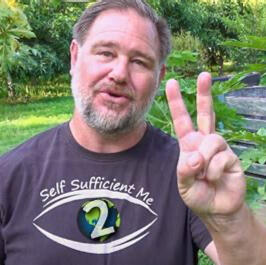


Reimagining Social Justice
Climate change has far-reaching impacts on social and economic systems, and its effects are disproportionately felt by marginalized communities. Addressing climate change is not just an environmental issue, but a social justice issue as well. The root causes of climate change are deeply connected to issues of inequality, discrimination, and exploitation. In this subpage, we will explore the intersectionality between social justice and climate change, and how environmental policies can address these inequalities. By recognizing the importance of social justice in climate action, we can create more equitable and sustainable solutions for a better future for all.
A Brief History On Environmental Justice
The Top 1% and climate Change
Millionaire Consumption Undermines 1.5 °C Climate Goals
The study suggests that the increasing number of millionaires will contribute significantly to climate change. By 2050, millionaires are projected to account for 3.3% of the world population and generate emissions equivalent to 72% of the remaining carbon budget to limit global warming to 1.5 °C. This poses a challenge to achieving climate stabilization goals, and it questions the effectiveness of policies such as progressive taxes in curbing emissions from high emitters.
Top 1% of U.S. Consumers Have Outsized Carbon Footprint
Wealthy individuals contribute more to greenhouse gas emissions through consumption, while marginalized communities suffer the most from climate impacts. A study on U.S. households reveals significant disparities in emissions across economic class and race. The top 0.1% of households have emissions 57 times higher than the bottom decile and 597 times higher than low-income country households. Addressing these extreme emissions disparities in climate policy is crucial to avoid limited effectiveness, loss of public support, and harm to marginalized groups.
Global carbon inequality over 1990–2019
The study examines global inequality in greenhouse gas (GHG) emissions between 1990 and 2019. It finds that the top 10% of the global population is responsible for 48% of emissions, while the bottom 50% contributes only 12%. The top 1% has been a significant contributor to emissions growth. The study also highlights that emissions inequality is now primarily within countries rather than between countries. Additionally, emissions from the global top 1% mainly come from investments rather than consumption. The findings emphasize the need for fair climate policies and better data on individual emissions for promoting sustainable lifestyles.
The wealthy and climate crisis
The Paris Agreement has set a target of limiting global warming to 2.0°C above pre-industrial levels, with efforts to limit the temperature increase to 1.5°C. However, the remaining carbon budget for achieving these targets is limited, and current emissions rates suggest that the 1.5°C threshold will be crossed in the early 2030s. The role of the wealthy in driving emission growth is a significant concern, with studies indicating that high emitters account for a disproportionate amount of global emissions, primarily due to energy-intensive transportation and multiple real estate ownership. The overall trend of increasing emissions with per capita income, concentration of wealth, and population growth further exacerbates the problem.
Justice
UN on climate Justice
In this article from the United Nations (UN) website, the concept of climate justice is explored. Climate justice seeks to ensure that efforts to combat climate change are fair and equitable, with a focus on addressing the needs of marginalized communities. The article highlights the disproportionate impact of climate change on vulnerable populations and emphasizes the importance of their inclusion in decision-making processes related to climate action. Additionally, the article discusses the responsibility of countries of the global north to take action to mitigate the effects of climate change and provide support to countries of the global south.
YCC on Climate Justice
This article from Yale Climate Connections (YCC) provides an insightful introduction to the concept of climate justice. It explains how marginalized communities are disproportionately impacted by the effects of climate change and why addressing these impacts is crucial for achieving a sustainable future. By emphasizing the importance of equity, diversity, and inclusion in climate solutions, the article highlights the need for a more just and equitable approach to climate policy and action. For anyone interested in understanding the critical role of climate justice in the fight against climate change, this article is an excellent starting point.
Climate Crisis and HUMAN Rights
This UN report is based on the idea that climate change is a human rights issue, and highlights the impacts of climate change on human rights, such as the right to life, health, food, water, housing, and self-determination.
The report also emphasizes the need for urgent action to address climate change and prevent further harm to human rights, including the implementation of measures to reduce greenhouse gas emissions, adaptation to the impacts of climate change, and the promotion of sustainable development.
Climate Crisis and climate legislation
This report delves into the current state of climate change-related litigation around the world, providing a comprehensive overview of the key cases and trends in various regions. As climate litigation continues to grow in both number and diversity, this report sheds light on the increasing importance of legal action in holding governments, corporations, and financial institutions accountable for their contributions to climate change or their failure to address it adequately.
Environ-mental Justice Advisory Council
This webpage is the official online platform of the White House Environmental Justice Advisory Council, a panel of experts and community leaders selected by the President of the United States to offer advice on matters of environmental justice. It presents comprehensive information about the Council's mission, objectives, members, and upcoming events. Besides, it offers resources and insights into environmental justice policies and initiatives, such as the Justice40 Initiative that seeks to channel 40% of the benefits of federal investments in clean energy and infrastructure to marginalized communities. In addition, the webpage provides guidance on how the public can participate in the advocacy and advancement of environmental justice.
Public Support for Climate Justice
This report presents the findings of a national survey on public opinion towards climate justice policies in the United States. The survey found that the majority of US Americans support various policies aimed at addressing the disproportionate impacts of climate change on marginalized communities. The report suggests that there is a broad base of support for climate justice policies among the US American public, but more work is needed to communicate their importance to policymakers and the wider public.
Youth Perspective On Environmental Justice And Racism
Hey there! Thank you for visiting. This part is still under construction! If there is something you wanna share, submit your tips at heartlandsfuture@gmail.com!